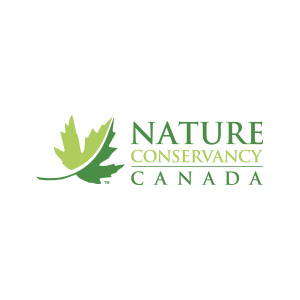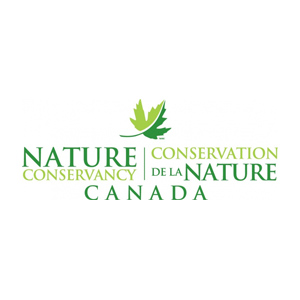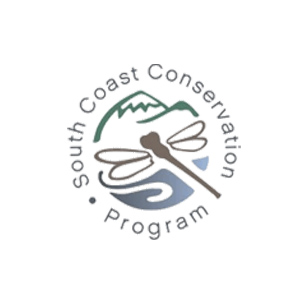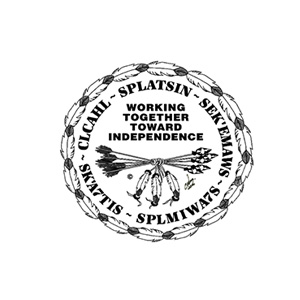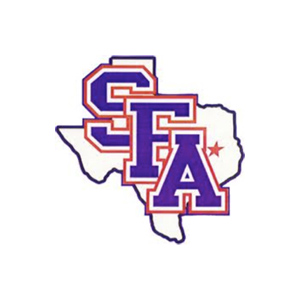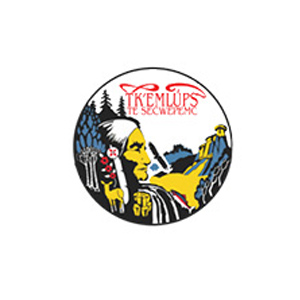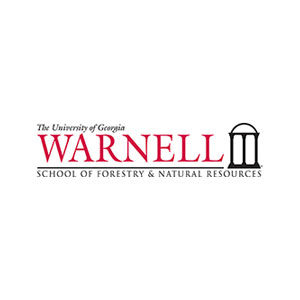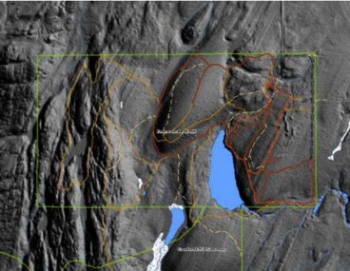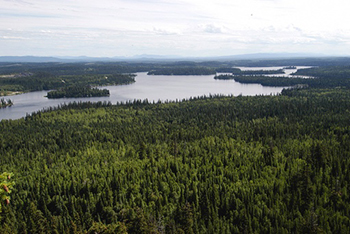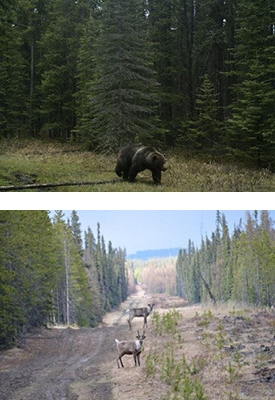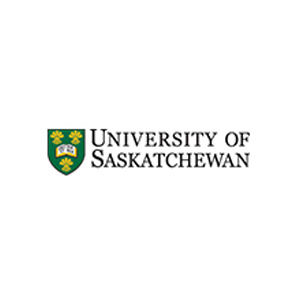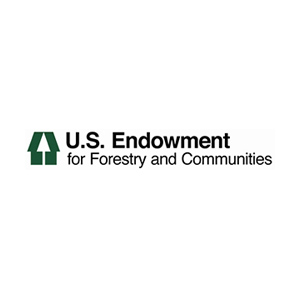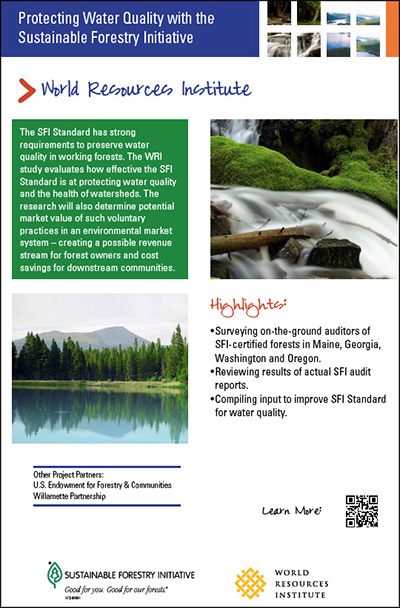SFI CONSERVATION GRANT PROJECTS
The SFI Conservation Grants Program supports projects that engage non-profit organizations, SFI-certified organizations and other stakeholders in SFI’s mission of advancing sustainability through forest-focused collaboration.
The SFI Conservation Grants Program strives to quantify and demonstrate the value of SFI-certified forestlands, and lands providing fiber through the SFI Fiber Sourcing Standard, toward mitigating climate change impacts, enhancing biodiversity, and protecting water resources.
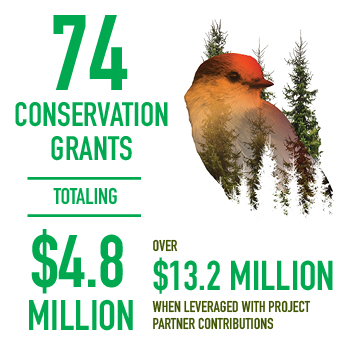
GRANTS BY CATEGORY
MAINE TREE FOUNDATION
SFI 2022 Forest Management Standards and Climate-Smart Forestry in
the Northeastern United States
Why This Project Matters
Climate change adversely affects biodiversity and water quality. This project will quantify climate change mitigation by researching the impact that implementing the SFI 2022 Forest Management Standard has on biodiversity and water quality. The Maine Timber Research and Environmental Education Foundation (Maine TREE) is conducting an in-depth literature review of relevant regional studies that shed light on the climate change risks threatening forests in Maine, New Hampshire, Vermont, and New York. There is often a gap between climate change studies and landowner knowledge. By analyzing studies on climate change and forest management, this project will clearly communicate information to landowners and SFI-certified organizations in a way that allows it to be directly applied when making forest management decisions.
How the Project is Supporting Climate-Smart Forestry
Forests and forest products play a central role in the carbon cycle and, with proper management, can be one of the most effective nature-based solutions to the climate crisis. MAINE Tree will produce resources and data for landowners that will support sustainable, climate-smart forest management decisions. These accessible tools and data will enable landowners and land managers to maximize the impact of the SFI Climate-Smart Forestry Objective.
SFI’s Contribution
The SFI Conservation and Community Partnerships Grant Program is supporting this project. MAINE Tree is partnering with the Maine SFI Implementation Committee and encouraging conversations with the New Hampshire, Vermont, and New York SFI committees. This will enable Maine TREE to identify trends in what has been done or what is being done in terms of climate-smart forestry on SFI-certified woodlands across the Northeast. They will document these trends, as well as all their roles and responsibilities as they coordinate with SFI stakeholders and SFI committees across all four states.
How the Project Helps Forest Managers
This project will give SFI-certified landowners and managers access to the best scientific information to inform future climate-smart management decisions as they implement the SFI 2022 Forest Management Standards. The grant results will ultimately help forest managers manage tree species such as fir, spruce, beech, maple, pine, and birch in a changing climate.
A reference manual will inform how SFI practices may mitigate climate change risks within Northeastern forests, by investigating climate-smart forestry practices that may not be labeled as such within published scientific literature. By capturing this information this project will simultaneously identify the existing information gaps related to public understanding of climate-smart forestry and address these gaps in the manual. Maine TREE will also organize climate-smart forestry focused education sessions.
Partners
This partnership includes conservation NGO’s and forestry companies to assure forest health in the face of climate change. These partners include:
Project Lead: Maine TREE Foundation
Sustainable Forestry Initiative
University of Maine
Maine SFI Implementation Committee
New Hampshire SFI Implementation Committee
Vermont SFI Implementation Committee
New York SFI Implementation Committee
Related Information
Keeping Maine’s Forests: Preparing for the Carbon Market in Forests Certified to the SFI Standard.
SFI Is Working to Give Land Managers the Data They Need to Mitigate Climate Change: The Canadian Forest Carbon Assessment.
Learn how Manomet’s Climate Smart Land Network is helping landowners manage their land for climate resilience.

About the Maine TREE Foundation
Maine Timber Research and Environmental Education Foundation (Maine TREE), founded in 1989 by a group of dedicated timberland owners, forest products producers, tree farmers, and others interested in the Maine forest, is a 501 (c) 3 non-profit organization based in Augusta, Maine. Our Mission is to educate and advocate for the sustainable use of the forest and the ecological, economic, and social health of Maine’s forest community. We realize our mission through research and education programs for schools, government, media, and the public. Our partnerships with forest community members support programs for forest owners, woods workers, and recreational users. Our Vision is that the public values and supports Maine’s healthy forest ecosystems, forest professionals, scientific forest management, and sound public policies that sustain Maine’s forest-dependent people and communities.
NATURESERVE
Quantifying Evidence of Imperiled Forest-Associated Species on SFI-Certified Lands
Why This Project Matters
This project will help address threats to biodiversity. Over 1,300 different species in the United States are listed as endangered or threatened, according to the US Environmental protection Agency. Environment and Climate Change Canada lists 640 species at risk. Sustainably managed forests can play a significant role in addressing these challenges. This project will quantitatively illustrate the degree to which SFI‑certified forests are known or have potential to support the most critically imperiled species, a key requirement of the SFI 2022 Forest Management Standard.
How the Project is Supporting Imperiled Forest-Associated Species
NatureServe has conducted two sets of pilots in four study areas to develop and measure a diverse suite of metrics covering individual species to landscapes. The project will evaluate two of those metrics across the entire footprint of SFI-certified lands, providing the first-ever quantification of the critical biodiversity value of the combined SFI footprint.
SFI’s Contribution
The SFI Conservation and Community Partnerships Grant Program is supporting this project. The project will build on past collaborations between SFI and NatureServe to quantify the conservation value of SFI certification across the US and Canada. SFI’s enormous scale with more than 370 million acres/150 million hectares certified to the SFI Forest Management Standard, and tens of millions of acres positively influenced by the SFI Fiber Sourcing Standard supports the scope of this project.
The results will also be summarized in graphs, charts and maps produced in collaboration with SFI, to maximize the broader communication objectives of conveying the multiple values of SFI-certified forests. NatureServe will work with SFI to develop materials that accurately and compellingly convey the results of this effort to a wide audience.
How the Project Helps Forest Managers
The project will help forest managers and forestland owners conserve biodiversity. This work aims to provide all SFI‑certified organizations with the ability to view the results for any spatial reporting unit via a secure online interactive tool built on the data analysis conducted for the project. At a minimum, results will be available for individual states and provinces. Finer-resolution reporting units are being pursued, contingent on permission from NatureServe member programs in the US and Canada. Regardless of minimum spatial resolution, results and deliverables will allow for analysis of the entire SFI footprint in both Canada and the US. The project will support SFI-certified organizations with biodiversity data that is directly relevant to the implementation of SFI standards on each organization’s specific forestlands.
Partners
This partnership includes conservation NGO’s, academics, and forestry companies to quantify imperiled forest species. These partners include:
Project Lead: NatureServe
Sustainable Forestry Initiative
Weyerhaeuser (SFI-certified organization)
Related Information
NatureServe: Devising New Ways to Measure Biodiversity Across Millions of Acres
NatureServe: Quantifying Ecological Values Delivered by Forests Certified to SFI and SFI Fiber Sourcing

About NatureServe
NatureServe empowers people to sustain biodiversity by making sure everyone has access to the knowledge they need to be better stewards of our shared lands and waters. NatureServe is an authoritative source of comprehensive, decision-quality biodiversity data. NatureServe provides the scientific knowledge that supports informed decisions. Together, with its network of over 80 programs, NatureServe collects decision-quality data about imperiled species and entire ecosystems, transforms that data into knowledge products and visualizations, and provides meaning through expert analyses and support to guide decision-making, implement action, and enhance conservation outcomes.
NATIONAL COUNCIL FOR AIR AND STREAM IMPROVEMENT
Effects of Pre- and Post-Fire Forest Management on Aquatic Biodiversity: An Evaluation of
Fire Resiliency and Recovery
Why This Project Matters
This project will help address the new realities of increasingly severe wildland fires. The United States is experiencing longer fire seasons, bigger fires, more acres burned on average each year, and more extreme fire behaviour. In September 2020, approximately 11% of Oregon’s Cascade Ecoregion burned in the Labor Day Fires, including at least 38% of SFI-certified lands within the Riverside, Beachie Creek and Holiday Farm complexes alone. These fires burned at varying severities, which resulted in a range of riparian conditions across land ownerships. Post-fire forest management also varies by ownership leading to different trajectories of recovery. The links among forest stand age, fire severity and extent, and aquatic biodiversity are unclear, ultimately stalling prioritization of forest recovery and resiliency.
How the Project is Supporting Pre- and Post-Fire Forest Management on Aquatic Biodiversity
The National Council for Air and Stream Improvement (NCASI), along with collaborators from the US Forest Service, Weyerhaeuser, and Oregon State University, will work to determine whether aquatic biological diversity varies with forest management or fire extent and severity. NCASI will assess which landscape or management factors are the most influential predictors of aquatic biological diversity in forested streams. Inclusive in the forest management analysis is pre-fire management and post-fire management. NCASI will also evaluate biodiversity across control watersheds in Oregon and Washington that are part of forestlands certified to SFI standards.
SFI’s Contribution
The SFI Conservation and Community Partnerships Grant Program is supporting this project. Access to the SFI network is also enabling NCASI to collaborate with multiple SFI‑certified organizations to add breadth to the project. Project partners will assist with development of fact sheets associated with this research and participate in NCASI-led field tours or workshops. Many participating landowners will provide management information to support this study.
How the Project Helps Forest Managers
The project will help forest managers and forestland owners support aquatic biodiversity with their pre- and post-fire forest management. Key messages anticipated to result from this work could include: recommendations for which SFI‑certified forest management practices promote fire resiliency and climate resiliency of aquatic ecosystems, and recommendations for which SFI‑certified forest management practices conserve aquatic biodiversity.
Recommendations for post-fire management of riparian areas to maximize aquatic ecosystem resiliency will be integrated into other deliverables, including a fact sheet on species at-risk responses to wildfire and management factors to help meet objectives in the SFI standards. Information will also be shared with small landowners through handouts and presentations to the SFI Oregon State Implementation Committee and the Oregon Small Woodland Association.
Partners
This partnership includes conservation NGO’s, forestry companies, and government to improve forest health in the face wildfire. These partners include:
Project Lead: NCASI
Sustainable Forestry Initiative
U.S. Forest Service
Weyerhaeuser Co. (SFI‑certified organization)
Oregon State University,
Related Information
SFI and NCASI Partner to Address the Climate Challenge with Carbon and Water Tools: media release
NCASI Foundation Receives Federal Conservation Grant for Collaborative Research Directed at Protecting At-Risk Species: media release

About NCASI
The National Council for Air and Stream Improvement, Inc. (NCASI) is a 501 (c)(6) tax-exempt association organized to serve the forest products industry as a center of excellence providing unbiased, scientific research and technical information necessary to achieve the industry’s environmental and sustainability goals. NCASI’s mission is to help our members cost-effectively meet their environmental and sustainability goals through basic and applied research, technical support, and education. Through execution of our mission, we provide essential support to our forest products industry members in their efforts to ensure the availability of a sustainably managed fiber supply, characterize and help improve the effectiveness of pollution control measures at manufacturing facilities and provide valuable insights and assistance to members in the manufacture of sustainable forest products.
NATIONAL COUNCIL FOR AIR AND STREAM IMPROVEMENT
Quantifying the Contribution of Sustainable Forest Practices for At-Risk Species and
Terrestrial and Aquatic Communities
Why This Project Matters
This project will help address threats to biodiversity. Over 1,300 different species in the United States are listed as endangered or threatened, according to the US Environmental protection Agency. Private forest owners care for more than 450 million acres of forestland – 60% of US forests – and they are critical to successful conservation initiatives. This project will quantify the role of sustainably managed forest landscapes in conserving species at risk, listed species, and maintaining aquatic and terrestrial communities. The study area encompasses approximately 500,000 acres of private, working forests in six Alabama counties: Monroe, Escambia, Baldwin, Conecuh, Covington, and Butler; and three Florida counties: Escambia, Santa Rosa, and Okaloosa.
How the Project is Supporting the Contribution of Sustainable Forest Practices for At-Risk Species
The National Council for Air and Stream Improvement (NCASI), along with a coalition of partners working through the Wildlife Conservation Initiative will examine multiple species over an extended time horizon in a landscape dominated by SFI‑certified, private forests managed primarily for timber production. The work will involve sampling environmental DNA (eDNA) that is collected from a variety of environmental samples such as soil and water, rather than directly from individual organisms. Target at-risk species that will benefit from this research include the Alabama map turtle, alligator snapping turtle, gopher tortoise, Red Hills salamander, and eastern diamondback rattlesnake.
SFI’s Contribution
The SFI Conservation and Community Partnerships Grant Program is supporting this project. This work will expand on past SFI conservation grants: Working Forests for Birds, and Quantifying Impacts of SFI’s Fiber Sourcing Standards in Georgia. Multiple SFI-certified organizations, that own or manage forests in the project area, are engaged in this work. Their engagement includes active participation in study design and implementation, in-kind support, and access for researchers to SFI-certified forests.
How the Project Helps Forest Managers
Active forest management is critically important for most SFI-certified organizations and understanding how these actively managed forests can contribute to conservation of at-risk species is needed. The project is part of a large-scale effort to document the value of private, working forests for conservation of at-risk species. The project will help forest managers and forestland owners in the region by quantifying how their high compliance rates with best management practice (BMP) have supported at‑risk species. It will establish the presence and persistence of upland amphibians, terrestrial reptiles, aquatic turtles, avian communities, fish communities, freshwater mussels, and plants.
The project will demonstrate the value of SFI-certified forests for conservation of species at risk and the value of implementing forestry BMPs for water quality and long-term conservation of aquatic communities. A direct link between forestry BMPs and aquatic species conservation is generally lacking, and this work will help inform that gap. Additionally, various communication tools will be shared to help SFI‑certified organizations communicate the conservation value of their work.
Partners
This partnership includes conservation NGO’s, government, and forestry companies to quantify the role of sustainable forestry in supporting at-risk species. These partners include:
Project Lead: NCASI
Sustainable Forestry Initiative
US Fish and Wildlife Service
National Alliance of Forest Owners
Tangled Bank Conservation
Wildlife Conservation Initiative
Conservation Resources (SFI‑certified organization)
Forest Investment Associates (SFI‑certified organization)
Hancock Forest Management (SFI‑certified organization)
Molpus Woodlands Group (SFI‑certified organization)
Potlatch Deltic Corporation (SFI‑certified organization)
Rayonier (SFI‑certified organization)
Resource Management Service, LLC (SFI‑certified organization)
The Westervelt Company (SFI‑certified organization)
Weyerhaeuser Company (SFI‑certified organization)
Related Information
University of Georgia: Quantifying Impacts of SFI’s Fiber Sourcing Standards in Georgia
Working Forests for Birds
SFI and NCASI Partner to Address the Climate Challenge with Carbon and Water Tools: media release
NCASI Foundation Receives Federal Conservation Grant for Collaborative Research Directed at Protecting At-Risk Species: media release

About NCASI
The National Council for Air and Stream Improvement, Inc. (NCASI) is a 501 (c)(6) tax-exempt association organized to serve the forest products industry as a center of excellence providing unbiased, scientific research and technical information necessary to achieve the industry’s environmental and sustainability goals. NCASI’s mission is to help our members cost-effectively meet their environmental and sustainability goals through basic and applied research, technical support, and education. Through execution of our mission, we provide essential support to our forest products industry members in their efforts to ensure the availability of a sustainably managed fiber supply, characterize and help improve the effectiveness of pollution control measures at manufacturing facilities and provide valuable insights and assistance to members in the manufacture of sustainable forest products.
BOREAL AVIAN MODELLING PROJECT
The Value and Resilience of SFI Forests for Eastern Forest Birds in a Changing Climate
Why This Project Matters
This project will guide the science of forest management planning to benefit a wide variety of birds in a changing climate. The Boreal Avian Modelling Project (BAM) will achieve this by improving understanding of the value and resilience of SFI‑certified forests for eastern North American forest birds.
The project will deliver comprehensive descriptions of actual and potential management practices consistent with SFI standards that can be related to changes in forest structure. The impact of past and present forest management on bird populations in SFI-certified vs. non-certified forests will also be evaluated. And the project will simulate the potential impact of future forest management practices on bird populations in SFI-certified vs. non-certified forests under potential climate change scenarios.
How the Project is Supporting Forest Birds in a Changing Climate
BAM will build on 20 years of experience in building regional models that are sensitive to forest age structure, species composition and configuration as well as to regional variation in climate and bird-species habitat selection. The project will specifically incorporate effects of identified best management practices (BMPs) on bird density in a changing climate. Using these models, BAM will identify practices, habitat types, and locations that make major contributions to total species abundance across eastern North America.
SFI’s Contribution
The SFI Conservation and Community Partnerships Grant Program is supporting this project. This project will build on past collaborations between SFI and BAM to quantify the conservation value of SFI certification across Canada. SFI’s enormous scale with more than 370 million acres/150 million hectares certified to the SFI Forest Management Standard, and tens of millions of acres positively influenced by the SFI Fiber Sourcing Standard supports the scope of this project. In Canada, this includes parts of Ontario, Quebec, New Brunswick, Nova Scotia, Prince Edward Island, and Newfoundland and Labrador. In the United States, this includes parts of Minnesota, Wisconsin, Michigan, and of northern New England. The scope of the project will also include the Great Lakes states, where cross-border collaboration has already been established through past SFI supported work by BAM.
How the Project Helps Forest Managers
This work will provide actionable assessments of the effects of BMPs on future bird populations on SFI‑certified lands under climate change scenarios. This will support recommendations as to how and if SFI‑certified organizations may need to adapt practices in the future to support bird conservation, and which BMPs would best be adapted. A toolkit and web application will support forest managers and directly impact implementing project findings for bird conservation.
Partners
This partnership includes conservation NGO’s and forestry companies to assure forest bird health in the face of climate change. These partners include:
Project Lead: Boreal Avian Modelling Project (University of Alberta)
Sustainable Forestry Initiative
Quebec SFI Implementation Committee
Resolute Forestry Products (SFI-certified organization)
Wisconsin Department of Natural Resources (SFI-certified organization)
The Forestland Group (SFI-certified organization)
Related Information
The Boreal Avian Modelling Project: SFI Supports Research to Help Billions of Birds in the Boreal Forest
The Boreal Avian Modelling Project: Bird Conservation Reaches Continental Scale through New Partnership with the Boreal Avian Modelling Project
Collaborating for Conservation of Managed Forested Landscapes (presentation).
SFI supported a Canada warbler workshop for conservationists and resource managers convened by Nature Canada. Media release.
American Bird Conservancy wins SFI President’s Award for putting SFI’s scale to work for birds. Media release.

About The Boreal Avian Modelling Project
The Boreal Avian Modelling Project (BAM) is an international scientific collaboration that develops and disseminates reliable, data-driven, and model-based science and products to support migratory bird management and conservation across the boreal region of North America. BAM was initiated in 2004 to address knowledge gaps associated with the management and conservation of boreal birds in North America. BAM is built on the foundation of boreal bird data. The BAM database was created by collating and harmonizing avian data from the Breeding Bird Survey, Breeding Bird Atlases, and individual research, monitoring, and inventory efforts conducted across the Canadian and US boreal and hemi-boreal region. We have developed specialized statistical approaches to harmonize these datasets by correcting for survey methodology and species detectability to estimate density.
PENTICTON INDIAN BAND
Assessing the Effectiveness of Enhanced Riparian Management in the Penticton Indian Band
Area of Responsibility
Why This Project Matters
This project will help address the need to incorporate recognition and respect for Indigenous Peoples’ rights and traditional knowledge into sustainable forestry practices. It will link Indigenous knowledge with scientific knowledge by assessing the effectiveness of enhanced riparian management in the Penticton Indian Band (PIB) area of responsibility in British Columbia. The project will showcase how implementing the SFI 2022 Forest Management Standard and the PIB Enhanced Riparian Standards integrate recognition of Indigenous rights and drive improved management and outcomes for Indigenous values relating to water quality on SFI‑certified forestlands.
How the Project Supports Riparian Management and linking Indigenous Knowledge with Scientific Knowledge
Indigenous Elders and Knowledge Keepers will play key roles in the project. It will prepare the forestry sector for the adaptation of syilx forestry standards and assist industry in meeting SFI standards. The Syilx People of the Okanagan Nation are a trans-boundary tribe separated by the border between Canada and the United States. The nation is comprised of seven member communities, including the Penticton Indian Band. The Penticton Indian Band will sample forest blocks selected in SFI-PIB managed tenures. This project will produce empirical data and syilx cultural data on the relative health and abundance of syilx values and water quality parameters in streams, known as cecwixa in nsyilxcən, and their associated riparian areas in SFI-PIB managed tenures when compared to other areas. The Penticton Indian Band will develop pre-harvest and post-harvest sampling procedures.
SFI’s Contribution
The SFI Conservation and Community Partnerships Grant Program is supporting this project. SFI is committed to building and promoting forest-focused collaboration rooted in recognition and respect for Indigenous Peoples’ rights and traditional knowledge. SFI firmly believes that inclusive, collaborative approaches to policy, program, and relationship development lead to real progress on the ground and a positive difference in people’s lives. The SFI 2022 Forest Management Standards includes Objective 8. It explicitly recognizes and respects Indigenous Peoples’ rights, ensures respect for Indigenous Peoples’ rights and traditional knowledge, and is aligned with the principles of the United Nations Declaration on the Rights of Indigenous Peoples.
How the Project Helps Forest Managers
The project will help forest managers and forestland owners understand how meeting Objective 8 of the SFI standard can support other SFI Objectives such as water quality and biodiversity. The Penticton Indian Band will host a webinar that will link syilx Knowledge Keepers and syilx Nation resource managers with forest industry representatives and government to discuss the syilx forest standards, syilx caretakership rights and responsibilities. This dialogue will open the door for meaningful collaboration. The project will also explore opportunities to present or showcase the results of the project with the Association of BC Forest Professionals and SFI-certified organizations.
Capital letters aren’t used in nsyilxcən words because, according to nsyilxcən language holders, capitalization insinuates that someone or something holds more importance than another, and this belief does not fall in line with syilx ethics.
Partners
This partnership includes Indigenous representatives and forestry companies working together to enhance riparian management. These partners include:
Project Lead: Penticton Indian Band
Sustainable Forestry Initiative
Interfor (SFI‑certified organization)
BC Timber Sales (SFI‑certified organization)
Related Information
Splatsin Indian Band: Forests Certified to SFI Work to Conserve Culturally Significant Plants, Enhancing Indigenous Values
Addressing Indigenous Interests and Building Partnerships fact sheet
The SFI Small-Scale Forest Management Module for Indigenous Peoples, Families and Communities in Canada

About the Penticton Indian Band
SnPink’tn (The Penticton Indian Band) represents one of the seven communities of the Okanagan Nation. The other six communities being Upper Similkameen, Lower Similkameen, Osoyoos Indian Band, Westbank Indian Band, Okanagan Indian Band, and Upper Nicola Indian Band. SnPink’tn is located on beautiful bench land in the southwestern portion of the Okanagan Valley. The SnPink’tn reserve is the largest reserve in the Province of British Columbia. The reserve itself borders the District of Summerland to the north and City of Penticton to the east as well as Okanagan and Skaha Lakes. The land has various topographic conditions including gentle hills, steep rocky cliffs, ravines and meadows.
American Bird Conservancy
Project Overview
American Bird Conservancy (ABC) received $70,000 over a two year period, beginning in 2011 from the SFI Conservation and Community Partnerships Grant program to improve bird conservation in ponderosa pine forests in the US Northwest. ABC’s work contributed towards reversing declines in Lewis’s Woodpecker, the White-headed Woodpecker, the Flammulated Owl, and Williamson’s Sapsucker, all of which are US Fish and Wildlife Service species of concern. The project created on-the-ground habitats, through stand thinning treatments, snag creation, and deployment of nesting boxes, for ten private landowners across 12,000 acres of forest land. ABC used these sites to host field visits and workshops which taught easily implementable bird conservation best management practices to dozens of landowners, collectively responsible for managing over 100,000 acres,. The project also hosted State and Federal wildlife and forestry agency staff seminars in Idaho, Montana, Oregon, and Washington. To supplement this work, ABC published two management guides: Land Managers Guide to Cavity Nesting Bird Habitat and Snags, Bark Beetles, and Cavity Nesters. Over 18,000 copies of these guides were distributed to land managers including 2,500 private landowners who manage over 500,000 acres of forest land.
The project intersects with Sustainable Forestry Initiative goals through conservation of biological diversity and wildlife habitat as well as landowner education and outreach.
Project Partners
American Bird Conservancy partnered with USDA Natural Resource Conservation Service, Deschutes Land Trust, and Pacific Stewardship LLC.

About American Bird Conservancy
American Bird Conservancy is a not-for-profit organization whose mission is to conserve native birds and their habitats throughout the Americas. ABC acts across the full spectrum of threats to birds to safeguard the rarest bird species, restore habitats, and reduce threats, unifying and strengthening the bird conservation movement.
AMERICAN BIRD CONSERVANCY
Enhancing North American Bird Habitat
Project Description

In 2014, American Bird Conservancy was awarded $86,000 from the SFI Conservation and Community Partnerships Grant program to work with a broad array of SFI-certified landowners to identify priority habitats for bird conservation, develop improved management scenarios for these habitats, and focus on locations where those ownerships intersect with critical habitats and flyways in North America. This analysis was combined with existing understanding of optimal habitat conditions, and an economic and feasibility analysis to determine the actual cost associated with managing certified forests to maximize habitat value. The combination of scale (major forest regions and forest types), along with the collaboration with SFI Program Participants on economic feasibility, made this project truly unique and practical. The breadth of partners involved enabled ABC to focus on a range of habitats and forest regions, and promote individual involvement of these various companies in places where their operations are focused. This Project has continued into Phase II, with an additional SFI grant to ABC in 2015.
The project intersects with SFI Certification Standards through conservation of biological diversity, and requirements for wildlife habitat conservation.
Project Partners
American Bird Conservancy partnered with NatureServe, Resource Management Service, LLC, Plum Creek Timber Company, Weyerhaeuser, Hancock Timber Resource Group.
Project Resources

About American Bird Conservancy
American Bird Conservancy is a not-for-profit organization whose mission is to conserve native birds and their habitats throughout the Americas. ABC acts across the full spectrum of threats to birds to safeguard the rarest bird species, restore habitats, and reduce threats, unifying and strengthening the bird conservation movement.
AMERICAN BIRD CONSERVANCY
Managed Forests for Birds, Phase II
Project Overview

Birds require a range of forest types—from mature stands to early successional habitats—for successful breeding, and migration, and wintering. Forest management activities can result in favorable or improved habitat conditions that support healthy bird populations. To enhance forest management for bird species of special concern, SFI provided the American Bird Conservancy (ABC) with a 2014 grant to engage SFI Program Participants in development of bird conservation strategies at a large scale. Building upon strong partnerships and tested management techniques, ABC will pursue phase II of this work through a $150,000, two-year grant from SFI.
The project will focus on the Klamath Mountains Region of Oregon and the pine and bottomland forests of the Southeastern United States. ABC will work with forestry and technical partners to assess the current management practices for birds resulting from the application of SFI Standards. They will then identify additional opportunities for management practices that benefit birds and develop recommendations to increase value for specific species, in partnership with SFI Program Participants. Ultimately, ABC will develop technical reports and outreach to guide other SFI Program Participants as well as federal, state, and private forest managers and landowners on the benefits of sustainable forestry and the conservation value of lands managed to the SFI Program Standards.
This project supports SFI’s objectives to conserve biological diversity, enhance wildlife habitat, and strengthen relationships between the forestry and conservation communities.

About American Bird Conservancy
American Bird Conservancy is a not-for-profit organization whose mission is to conserve native birds and their habitats throughout the Americas. ABC acts across the full spectrum of threats to birds to safeguard the rarest bird species, restore habitats, and reduce threats, unifying and strengthening the bird conservation movement.
Project Partners
For this project American Bird Conservancy will partner with the Klamath Bird Observatory, National Council for Air and Stream Improvement, Avian Research and Conservation Institute, East Gulf Coastal Plain Joint Venture; as well as SFI Program Participants Hancock Timber Resource Group, Weyerhaeuser Company, Resource Management Service, LLC, Campbell Global LLC, Forest Investment Associates, Georgia-Pacific, Molpus Woodlands Group, Potlatch Corporation, Rayonier, Inc., The Westervelt Company, Lone Rock Timber, and Enviva.
AMERICAN BIRD CONSERVANCY
Bird Conservation Goes Continental with ABC – Linking Managed Forests at an Unprecedented Scale
Operationalizing Conservation Value Through Multi-species Evaluation on Lands Certified to SFI
Why This Project Matters
Examining the needs of a wide variety of birds helps build understanding of broader ecosystem health and sustainable forest management, which provides wider environmental benefits like clean water and carbon storage. This project is producing data and establishing methodologies to demonstrate the conservation values of forestlands certified to SFI. It is also measuring the conservation values associated with the application of the SFI Fiber Sourcing Standard.
The project builds on and further refines estimates of conservation values in the American Bird Conservancy’s (ABC) five pilot areas in the U.S. Southeast. It also incorporates robust bird and habitat data from the Cornell Lab of Ornithology’s eBird citizen-science database.
How the Project is Linking Managed Forests at an Unprecedented Scale
This proposal is refining methods from ABC’s past projects, supported by SFI, in the U.S. Southeast and Pacific Northwest and expanding this work into a new pilot area. This is demonstrating how research methods can be transferred to regions with different ecological conditions. SFI staff have worked with both ABC and the Boreal Avian Modelling Project (BAM), based at the University of Alberta, to ensure dovetailing of their respective proposals. Strengthening collaboration between ABC and BAM effectively links work across the U.S.‑Canada border while advancing knowledge at a continental scale.
SFI’s Contribution
The SFI Conservation and Community Partnerships Grant Program is supporting this project. SFI has engaged with both ABC and BAM to shape this project as a partnership. The partnership features a structured approach to direct coordination between ABC and BAM. The strength of the project hinges on combining the modeling power of BAM with ABC’s experience engaging SFI Program Participants. This partnership will capitalize upon ABC’s relationship skills and BAM’s modeling skills to advance SFI Program Participant implementation of recommended forest management practices.
How the Project Helps Forest Managers
This project will help SFI to translate the conservation value of forests certified to SFI to brand owners seeking to communicate the positive qualities of their supply chain choices. ABC will continue to share our progress and results from the Managed Forests and Birds partnership broadly throughout the wildlife conservation community.
This work will also provide credible, defensible assurances that customers are supporting the sustainability attributes they desire when buying forest products. It will also help build understanding about the relationship between these products and the forest values we all care about. Forest managers will also benefit from a range of tools to help guide forest management decisions. For example, managers will be able to estimate the value of young forest habitats to the associated bird species and in turn link decisions to habitat and species management.
Partners
This partnership includes conservationists, researchers, and SFI Program Participants.
- Project lead: American Bird Conservancy
- Sustainable Forestry Initiative
- University of Alberta Department of Renewable Resources, Boreal Avian Modelling Project
- NatureServe
- National Council for Air and Stream Improvement (NCASI)
- Hancock Timber Resources Group (SFI Program Participant)
- International Paper Company (SFI Program Participant)
- Rayonier (SFI Program Participant)
- Resource Management Service (SFI Program Participant)
- The Westervelt Company (SFI Program Participant)
- Weyerhaeuser (SFI Program Participant)
Related Information
- American Bird Conservancy: Bird Friendly Forests – Opportunities for Private Forest Owners in the Southeastern United States
- American Bird Conservancy: Bringing Back the Forest Birds, Phase II
- ABC Wins SFI President’s Award for Putting SFI’s Scale to Work for Birds
- Bird Conservation Reaches Continental Scale through New Partnership with the Boreal Avian Modelling Project
- Collaborating for Conservation of Managed Forested Landscapes (presentation)
- SFI supported a Canada warbler workshop for conservationists and resource managers convened by Nature Canada (media release)

About the American Bird Conservancy
The American Bird Conservancy is a not-for-profit organization whose mission is to conserve native birds and their habitats throughout the Americas. ABC acts across the full spectrum of threats to birds to safeguard the rarest bird species, restore habitats, and reduce threats, unifying and strengthening the bird conservation movement.
AMERICAN BIRD CONSERVANCY
Ponderosa Pines
Project Overview
American Bird Conservancy (ABC) received $70,000 over a two year period, beginning in 2011 from the SFI Conservation and Community Partnerships Grant program to improve bird conservation in ponderosa pine forests in the US Northwest. ABC’s work contributed towards reversing declines in Lewis’s Woodpecker, the White-headed Woodpecker, the Flammulated Owl, and Williamson’s Sapsucker, all of which are US Fish and Wildlife Service species of concern. The project created on-the-ground habitats, through stand thinning treatments, snag creation, and deployment of nesting boxes, for ten private landowners across 12,000 acres of forest land. ABC used these sites to host field visits and workshops which taught easily implementable bird conservation best management practices to dozens of landowners, collectively responsible for managing over 100,000 acres,. The project also hosted State and Federal wildlife and forestry agency staff seminars in Idaho, Montana, Oregon, and Washington. To supplement this work, ABC published two management guides: Land Managers Guide to Cavity Nesting Bird Habitat and Snags, Bark Beetles, and Cavity Nesters. Over 18,000 copies of these guides were distributed to land managers including 2,500 private landowners who manage over 500,000 acres of forest land.
The project intersects with Sustainable Forestry Initiative goals through conservation of biological diversity and wildlife habitat as well as landowner education and outreach.
Project Partners
American Bird Conservancy partnered with USDA Natural Resource Conservation Service, Deschutes Land Trust, and Pacific Stewardship LLC.
Resources
Land Manager’s Guide to Cavity-Nesting Bird Habitat and Populations


About American Bird Conservancy
American Bird Conservancy is a not-for-profit organization whose mission is to conserve native birds and their habitats throughout the Americas. ABC acts across the full spectrum of threats to birds to safeguard the rarest bird species, restore habitats, and reduce threats, unifying and strengthening the bird conservation movement.
THE AMERICAN CHESTNUT FOUNDATION
Restoring the American Chestnut Grant
Project Overview
Starting in 2010 The American Chestnut Foundation received $60,000 over two years to establish some of the first plantings of blight-resistant American Chestnuts in the southeastern United States. Approximately 3,000 of the most advanced American Chestnuts were planted on SFI partners Georgia-Pacific and MeadWestvaco land, near Rupert, West Virginia; Big Island, Virginia; and Bridgestone, Tennessee. The project offered a robust start to Chestnut re-establishment and provided critical baseline information needed to perpetuate the process of species restoration. Through this grant the Foundation created a Best Management Practices manual for American Chestnut reintroduction. Additionally a web-based database was created where restoration participants enter follow up reports on landscape level progress relating to the project.
View the American Chestnut Foundation’s final report here.
View ACF’s Chestnut Reintroduction BMP manual here.
Supporting the SFI Standard
This project supports Objective 4 of the SFI 2010-2014 Standard by providing critical long-term information needed to restore the American chestnut to its historic range, and addressing knowledge gaps to ensure the future success of American Chestnut restoration. Objective 4 requires that program participants “manage the quality and distribution of wildlife habitats and contribute to the conservation of biological diversity by developing and implementing stand- and landscape-level measures that promote a diversity of types of habitat and successional stages, and conservation of forest plants and animals, including aquatic species.” One of the indicators (4.2) is a program to protect threatened and endangered species.
Project Partners
In addition to The American Chestnut Foundation, partners included the Tennessee Tree Farm State Committee and the SFI Implementation Committee, as well as SFI program participants Georgia-Pacific and MeadWestvaco (MWV).
News
West Virginia Chapter of The American Chestnut Foundation and MeadWestvaco Committed to Species Restoration as part of SFI Conservation Grant Project
Press Release
May 2, 2011

About The American Chestnut Foundation
The mission of The American Chestnut Foundation is the restoration of the American chestnut tree to its historic range, from Maine to Georgia. The American chestnut, a valuable food source and source of high-value wood products, was functionally removed during the first half of the 20th Century by chestnut blight, an exotic fungal disease.
AMERICAN FOREST FOUNDATION
Motivating Forest Stewardship and American Tree Farm Certification among Family Forestland Owners in Priority Ecological Areas
Project Description

The American Forest Foundation (AFF) was awarded $30,000 to support North Carolina family forestland owners in certification to the American Tree Farm System (ATFS) and engage landowners who may not be ready for certification, on a pathway to sustainable forest management.
In this unique project, AFF conducted outreach utilizing several coordinated targeting methods, which together ensured both the certification relevance and ecological impact of efforts. The first level of targeting was selecting lands within the North Carolina Significant Geographic area identified by the “America’s Longleaf Conservation Plan.” That focus was further refined to reflect highest priority areas based on an assessment of ecological importance at the landscape level. The resulting priority areas were then compared against the ownership boundaries of State Forest Stewardship Landowners that lie within the procurement areas of SFI certification participants to determine the core area of focus. Lastly, within this focal area, landowners were screened using practices developed by AFF that identify individuals most likely to certify their lands or pursue sustainable forestry. These landowners were contacted and offered field visits and expert advice by ATFS Foresters. Landowners not ready to certify were encouraged to join local and state stewardship efforts and offered MyLandPlan, an AFF online resource for landowners interested in sustainable forestry.
The project supported SFI objectives to increase sustainable forest management within the family forest landowner community, and protect ecologically significant landscapes.
Project Partners
For this project The American Forest Foundation partnered with The American Tree Farm System and the North Carolina Tree Farm Committee.


About American Forest Foundation
The American Forest Foundation (AFF) works on-the-ground with families, teachers and elected officials to promote stewardship and protect the values provided by our nation’s forest heritage. A commitment to the next generation unites our nationwide network of forest owners and teachers. These devoted professionals work to keep our forests healthy and our children well-prepared for the future they will inherit.
AFF works nationwide and in partnership with local, state and national groups to address ecological and economic challenges that require the engagement of family forest owners.
AMERICAN FORESTS
A Practice-Based Approach to Increasing Forest Carbon Mitigation Through Forest Soils
Fostering Understanding and Creating Tools to Help Landowners Protect and Enhance Forest Soil Carbon
Why This Project Matters
Soils are a frequently overlooked component of forest carbon pools, but they often hold more carbon than a forest’s aboveground biomass. Soil is a critical component to include when discussing climate mitigation, and to incorporate into climate action plans. However, soil carbon is difficult to account for in management objectives. Available data is limited, and capturing data at the site level, which is most relevant to individual landowners and site-specific management decisions, is expensive. Also, the impacts of different kinds of forest management and disturbance (e.g., harvesting, reforestation, or fire) on soil carbon balances are dependent on individual locations.
How This Project Is Increasing Forest Carbon Mitigation Through Forest Soils
The project developed an approach to include soils in forest carbon calculations, to better understand whole-ecosystem carbon dynamics, as well as the impacts of forest management on the entire forest carbon pool. American Forests helped create decision-support-tools for project partner, Maryland DNR Forest Service, to identify areas of high vulnerability and opportunity for soil carbon impacts in Maryland’s forests. They interpreted national and regional data on forest soils and differential impact of forest management practices to determine potential applicability of these data and findings to the forest soils of Maryland. Based on the analysis, American Forests created Central Appalachian and Mid Atlantic ecoregional guidance documents that recommend best practices to address different management strategies. They linked these approaches to specific sections of the SFI Forest Management Standard as a support tool for forest managers in the region.
SFI’s Contribution
The SFI Conservation Partnerships Grant Program supported this project. The program fosters partnerships between organizations interested in measuring conservation outcomes and motivating improved forest management and responsible procurement. This project brought together academics, NGOs, forest producers, and government agencies to help ensure a positive future.
The results will also be summarized in graphs, charts and maps produced in collaboration with SFI, to maximize the broader communication objectives of conveying the multiple values of SFI-certified forests. NatureServe will work with SFI to develop materials that accurately and compellingly convey the results of this effort to a wide audience.
How This Project Helps Forests
The project proponents constructed a menu of forest management practices and guidelines that are beneficial for soil carbon, allowing landowners and land managers to better protect their existing forest soil carbon and enhance it as a climate mitigation tool. The project team performed a literature review and meta-analysis on soil profile datasets and found that harvesting had no significant overall effect on soil carbon in forests. However, variation of harvest impacts on soil carbon depends upon landform and soil order, and soil horizons. Harvest practices in some places can also influence the magnitude and variability of soil carbon change. Reforestation of cultivated soils increases soil carbon. Biomass and soil carbon recover concurrently during reforestation. Fire causes variable and potentially large soil organic carbon decreases.
Partners
This partnership includes conservation NGO’s, academics, and forestry companies to quantify imperiled forest species. These partners include:
Project Lead: American Forests
Sustainable Forestry Initiative
Northern Institute of Applied Climate Science
University of Michigan
Maryland Department of Natural Resources Forest Service (SFI Certified Organization)
Related Information
The SFI-NCASI Carbon Tool: Carbon Benefits from SFI Certified Lands in The United States

About American Forests
American Forests creates healthy and resilient forests, from cities to large natural landscapes, that deliver essential benefits for climate, people, water, and wildlife. They advance their mission through forestry innovation, place-based partnerships to plant and restore forests, and movement building. American Forests envisions a world in which the significant environmental, societal, and economic benefits of forests are fully realized and equitably available to all people. They embrace diverse perspectives, focus on the most pressing issues of the day, empower others, and engage in projects, even if the results are only experienced by future generations. Learn more.
AUDUBON NEW YORK
Conserving Bird Habitat through Sustainable Forest Management

Project Overview
Forest dwelling birds require large, unfragmented forest landscapes that includes a mix of successional stages and quality brood-rearing habitat for successful reproduction, and migration. To meet these needs, the New York Chapter of Audubon Society received $14,000 over two years beginning in 2011, to create a stronger link between forest management and bird conservation, and transfer knowledge and best practices to seven other states along the Atlantic Flyway. Audubon hosted five workshops to advise landowners how to integrate bird habitat considerations into their forest management plans and practices. These workshops were attended by 137 forest owners and forest managers, who manage over 815,000 acres of private forest lands as well as large areas of state forest across New York and Vermont. Audubon also created two informational bulletins, which were distributed to landowners across the region.
Audubon New York’s forest conservation and stewardship work is part of a larger effort being undertaken by Audubon throughout the Atlantic Flyway region, with similar work underway or planned in Maine, Vermont, Pennsylvania, Connecticut, Virginia, and North and South Carolina, as well as at wintering sites for priority migratory species in Central and South America.
The project directly relates to Sustainable Forestry Initiative goals of protecting and promoting biological diversity as well as improving the practice of sustainable forestry through training, education programs, and landowner outreach.
Project Partners
For this project Audubon New York, partnered with the Empire State Forest Products Association, which leads the SFI Implementation Committee in New York State.

About Audubon NY
Audubon New York, the 50,000-member State program of the National Audubon Society, is dedicated to protecting birds and other wildlife and the habitats that supports them. As part of a national network of community-based nature centers and chapters, scientific and educational programs, and advocacy on behalf of areas sustaining important bird populations, Audubon New York helps to engage millions of people of all ages and backgrounds in positive conservation experiences.
Latest News
SFI Grant Helps Audubon New York Link Forest Management to Bird Conservation
Press Release- June 6, 2011
BIRD STUDIES CANADA
Improving Forest Habitat Management
Project Overview
Bird Studies Canada will receive $80,000 a year for three years, beginning in 2010, for a total of $240,000 to provide science-based data and tools that SFI program participants can use to improve forest habitat management beyond regulatory compliance for the conservation of bird biodiversity and species at risk across Canada.
Supporting the SFI Standard
The project will build on the well-established, volunteer-based Canadian Breeding Bird Atlas program, helping forest managers meet legal, regulatory and SFI Standard requirements with respect to biodiversity conservation and protection of threatened and endangered species. This includes Objective 4 of the SFI 2010-2014 Standard calling for program participants “to manage the quality and distribution of wildlife habitats and contribute to the conservation of biological diversity by developing and implementing stand- and landscape-level measures that promote a diversity of types of habitat and successional stages, and conservation of forest plants and animals, including aquatic species.”
Project Partners
In addition to Bird Studies Canada, partners include the Canadian Wildlife Service, Regroupement QuébecOiseaux, and Breeding Bird Atlas projects in the Maritimes, Ontario, Manitoba, and British Columbia as well as seven SFI program participants – NewPage, Port Hawkesbury Corporation, Bowater Mersey Paper Company Ltd., Abitibi-Bowater, J.D. Irving Ltd., Acadian Timber and Louisiana-Pacific Corp.
Project Details
Information from Breeding Bird Atlases about the distribution of breeding bird species will be supplemented by data gathered from forest areas not easily accessed by volunteers, and from harvesting data already collected on existing and potential SFI project participant lands in Nova Scotia, New Brunswick, Quebec, Ontario, Manitoba and British Columbia. The project will lead to a customized web portal where forestry companies can request, obtain, manage, and potentially analyze data specific to their managed lands.
SFI program participants will be able to use the data to develop programs and management plans to promote the conservation of native bird diversity and threatened and endangered species. Birds are an excellent indicator of biological diversity with measureable responses to forest management practices.

About Bird Studies Canada
Not-for-profit Bird Studies Canada advances the understanding, appreciation, and conservation of wild birds and their habitats, in Canada and elsewhere, through studies that engage the skills, enthusiasm, and support of its members, volunteers, and the interested public. It was a partner in a unique study of bird populations expected to improve forestry practices in Canada’s Acadian forests that won an SFI Leadership in Conservation Research Award in 2008.
Latest News
Bird Studies Canada Project Supported by SFI Exceeds Expectations
Press Release- January 5, 2011
Project Resources
Annual Conference Presentation
An innovative conservation partnership to inform best management practices and facilitate regulatory compliance.
THE BOREAL AVIAN MODELLING PROJECT
SFI Supports Research to Help Billions of Birds in the Boreal Forest
Why This Project Matters

The boreal forest, stretching from Alaska to Newfoundland is an important global bastion of bird life and billions of birds migrate to and from the boreal forest every year from as far away as South America. They can face threats all along these massive flyways. With our North American scale SFI hopes to proactively and positively influence bird conservation on managed, working-forest landscapes.
The Canada warbler, for example, flies back and forth from the northern Andes to the boreal forest. In Canada, where about 80% of the Canada warbler’s global breeding range is located, it breeds in all provinces and territories. It is listed as a threatened species under Canada’s Species at Risk Act (SARA). A grant, from the SFI Conservation and Community Partnerships Grant Program, is helping the Canada warbler, and all boreal birds, by supporting the University of Alberta’s Boreal Avian Modelling (BAM) Project.
How the Project Helps Conserve Biodiversity
The BAM project is a partnership of many organizations led by the University of Alberta, Université Laval and Environment and Climate Change Canada, the broader partnership includes academic institutions, government agencies and environmental NGOs. BAM was created to develop models that will help managers, including forest managers, understand which habitats birds need for breeding. This work will meet immediate conservation needs and inform future research and monitoring efforts. The results generated by BAM are relevant to anyone with an interest in the conservation of over 300 species of birds found in the boreal.
For example, BAM data on the olive-sided flycatcher, which is listed as threatened under SARA, is being used in the Alberta Land Use Framework and other land-use planning exercises to understand how changes in forest age and type will influence it and other birds’ breeding habitats. These types of land-use scenario models will aid in the development of regional management plans that feed into provincial conservation and stewardship strategies for private and public lands.
How the Project Helps Forest Managers
The BAM project will investigate conservation management needs of SFI Program Participants and other forestland managers. In the case of the brown creeper, for example, preliminary data show the birds have a strong preference for nesting in dead or dying trees. Whereas some birds like the Lincoln’s Sparrow and the pine siskin are common in harvested areas.
BAM data also have the potential to inform land managers of a range of bird habitat needs. This data could help guide management decisions at a landscape and stand level, including forests of exceptional conservation value. BAM data has the potential to enhance implementation of stand- and landscape-level measures that promote a diversity of habitat types, which is a requirement under the SFI 2015-2021 Forest Management Standard.
SFI’s contribution
SFI has developed strong partnerships across North America to enhance forest bird conservation. Our work with BAM is the latest in one of many bird conservation projects. Working with BAM will allow SFI Program Participants to scale up work to a national level, and perhaps inform continental conservation of some species. This will complement the work of a range of SFI partners in establishing and enhancing the conservation value of SFI lands for forest birds.
The project is also directly supported by SFI Program Participants Canfor, Louisiana-Pacific, West Fraser and Weyerhaeuser. These companies will provide in-kind data support to help BAM in characterizing the conservation value of their certified land base. These partners will also contribute data expertise and analysis coordination.
This partnership cuts across government, academia, conservation NGO’s and industry to provide strategic coordination around large-scale conservation efforts focused on bird habitat and breeding patterns. These partners include:
Partners
- Project lead: University of Alberta
- Sustainable Forestry Initiative
- American Bird Conservancy
- Bird Studies Canada
- Canadian Wildlife Service
- Canfor (SFI Program Participant)
- Ducks Unlimited Canada
- Louisiana-Pacific (SFI Program Participant)
- Nature Canada
- Université Laval
- University of British Columbia
- West Fraser (SFI Program Participant)
- Weyerhaeuser (SFI Program Participant)

About Boreal Avian Modelling Project
The Boreal Avian Modelling Project is a collaborative science program committed to improved understanding of the ecology of birds and their habitats in the boreal region of North America.
Using quantitative modelling techniques and a comprehensive dataset assembled from projects across the continent, we derive information on abundance, distribution and habitats of boreal birds, and use this to evaluate and predict the effects of human activity.
Related Information
- SFI supported a Canada warbler workshop for conservationists and resource managers convened by Nature Canada. Media release.
- American Bird Conservancy wins SFI President’s Award for putting SFI’s scale to work for birds. Media release.
- Greg Siekaniec, former CEO of Ducks Unlimited Canada, has an op-ed in the Vancouver Sun, “Opinion: Protecting the treasure that is Canada’s boreal forest.”
- Ducks Unlimited Canada wins SFI President’s Award for leadership in forest conservation and community objectives. Media release.
BOREAL AVIAN MODELLING PROJECT
Bird Conservation Reaches Continental Scale through New Partnership with the Boreal Avian Modelling Project
Applying Data-Driven Measures to Evaluate and Improve the Conservation Value of Managed Forests for Birds
Why this project matters
The boreal forest, stretching from Alaska to Newfoundland, is an important global bastion of bird life. Billions of birds migrate to and from the boreal forest every year from as far away as South America. Species like the Canada warbler, for example, fly back and forth from wintering in the northern Andes to breeding in Canada’s boreal forest. Approximately 80% of the Canada warbler’s global breeding range is located in the boreal, and it breeds in all provinces and territories. It is listed as a threatened species under Canada’s Species at Risk Act (SARA). With about 89 million hectares/220 million acres of forestland certified to SFI in Canada, SFI has the scale to proactively and positively influence bird conservation on well‑managed, forest landscapes.
How the project helps conserve biodiversity
A grant from the SFI Conservation and Community Partnerships Grant Program is supporting the University of Alberta’s Boreal Avian Modelling (BAM) Project. The BAM project is a partnership of many organizations led by the University of Alberta, Université Laval and Environment and Climate Change Canada. The broader partnership includes academic institutions, government agencies and environmental NGOs.
BAM was created to develop models that will help natural resource managers identify important habitats for breeding birds. This work will meet immediate conservation needs, inform current management, and provide future research and monitoring efforts. The results generated by BAM are relevant to those interested in the conservation of over 300 species of birds found in the boreal.
For example, BAM data on the olive-sided flycatcher, which is listed as threatened in Canada, is being used in the Alberta Land Use Framework and other land-use planning exercises to understand how changes in forest age and type will influence its habitat and that of other breeding birds. These types of land‑use scenario models will aid in the development of regional management plans that feed into provincial conservation and stewardship strategies for private and public lands.
SFI’s contribution
SFI has developed strong partnerships across Canada and the U.S. to enhance forest bird conservation, with the BAM project representing the latest in these ongoing efforts. Working with BAM will allow SFI Program Participants to scale up work to a national level, and ultimately inform continental conservation of some species. This will complement the work of a range of SFI partners in establishing and enhancing the conservation value of lands certified to SFI.
The project is also directly supported by SFI Program Participants Canfor, Domtar, Interfor Corporation, Resolute, Tolko, and West Fraser. These companies will provide in-kind data support to help BAM in characterizing the conservation value of their certified land base. These partners will also contribute data, expertise, and analysis coordination.
How the project helps forest managers
The BAM project will continue to build on earlier investigations by SFI Program Participants and other researchers to inform land managers of a range of bird habitat needs. This data will help inform management decisions at a landscape and stand level, including forests of exceptional conservation value. BAM data has the potential to enhance implementation of stand- and landscape-level measures that promote a diversity of habitat types, which is a requirement under the SFI 2015-2019 Forest Management Standard.
This project will quantify the contribution that forests certified to SFI make to the attainment of broadly accepted conservation goals relative to bird habitat. It also underscores the unique role of large blocks of managed forests in contributing to the habitat needs of wide-ranging species, and contributions to landscape-scale objectives.
Partners
This partnership includes academics, conservationists, researchers, SFI Program Participants and Canadian federal and provincial government officials.
Project lead: University of Alberta Department of Renewable Resources, Boreal Avian Modelling Project
Sustainable Forestry Initiative
Canfor (SFI Program Participant)
Domtar (SFI Program Participant)
Interfor Corporation (SFI Program Participant)
Resolute (SFI Program Participant)
Tolko (SFI Program Participant)
West Fraser (SFI Program Participant)
Central Canada SFI Implementation Committee
Western Canada SFI Implementation Committee
American Bird Conservancy
Bird Studies Canada
Université Laval
Environment and Climate Change Canada
Ontario’s Ministry of Natural Resources and Forestry
Canadian Wildlife Service
Saskatchewan Breeding Bird Atlas
Boreal Ecosystems Analysis for Conservation Networks
Canadian Forest Service
Center for Northern Forest Ecosystem Research
Ducks Unlimited Canada
Nature Canada
Related information
Collaborating for Conservation of Managed Forested Landscapes (presentation).
SFI supported a Canada warbler workshop for conservationists and resource managers convened by Nature Canada. Media release.
American Bird Conservancy wins SFI President’s Award for putting SFI’s scale to work for birds. Media release.
Greg Siekaniec, former CEO of Ducks Unlimited Canada, has an op-ed in the Vancouver Sun, Protecting the treasure that is Canada’s boreal forest.

About Boreal Avian Modelling Project
ProThe Boreal Avian Modelling Project is a collaborative science program committed to improved understanding of the ecology of birds and their habitats in the boreal region of North America. Using quantitative modelling techniques and a comprehensive dataset assembled from projects across North America, we derive information on abundance, distribution and habitats of boreal birds, and use this to evaluate and predict the effects of human activity.
BOREAL AVIAN MODELLING PROJECT
Bird Conservation Goes Continental with BAM – Linking Managed Forests at an Unprecedented Scale
Operationalizing Conservation Value Through Multi-species Evaluation on Lands Certified to SFI
Why this Project Matters
The diversity of bird communities acts as an indicator of an ecosystem’s overall biodiversity. While single‑species assessments are important, evaluating forestlands in terms of the composition of larger bird communities can show how they contribute to regional biodiversity. This project, led by the Boreal Avian Modelling Project (BAM), is employing metrics that estimate the contribution of forest stands and landscapes to regional bird biodiversity. A key feature of these metrics is that they emphasize rare species and distinctive communities in addition to species richness. These metrics can also be modeled in different types of forests and at different scales.
This research project is an extension of an existing project supported by SFI: Applying Data-Driven Measures to Evaluate and Improve the Conservation Value of Managed Forests for Birds. It is also linked to another research project led by the American Bird Conservancy (ABC) and supported by SFI: Managed Forests for Birds.
How the Project is Linking Managed Forests at an Unprecedented Scale
This project will provide explicit measures of conservation value, allowing project partners to determine and report on the direct contributions to regional biodiversity made by lands certified to SFI. This research will be co-produced with interested partners, such as ABC, NatureServe and SFI Implementation Committees. The ultimate goal is to facilitate on-the-ground implementation of conservation measures by SFI Program Participants. Because this project represents a collaborative effort with ABC, it is effectively taking both bird population science, and SFI Program Participant engagement, to a continental scale.
SFI’s Contribution
The SFI Conservation and Community Partnerships Grant Program is supporting this project. SFI has engaged with both BAM and ABC to shape this project as a partnership. The partnership features a structured approach to direct coordination between ABC and BAM. The strength of the project hinges on combining the modeling power of BAM with ABC’s experience engaging SFI Program Participants. This partnership will capitalize upon ABC’s relationship skills and BAM’s modeling skills to advance SFI Program Participant implementation of recommended forest management practices.
How the Project Helps Forest Managers
This project will give forest managers methods, based on bird community diversity, to define and measure conservation value. Metrics combining species richness and rarity will quantify the contributions of forest stands and landscapes to overall regional biodiversity. It will also strengthen SFI’s collaborative framework by working directly with partners in the co‑production of the research. Co-production will facilitate results being translated into actionable recommendations that can be implemented on-the-ground by SFI Program Participants.
Partners
This partnership includes conservationists, researchers, SFI Program Participants, and government agencies.
- Project lead: University of Alberta Department of Renewable Resources, Boreal Avian Modelling Project
- Sustainable Forestry Initiative
- American Bird Conservancy
- Boreal Ecosystems Analysis for Conservation Networks (BEACONs) Project
- Canadian Forest Service
- Canadian Wildlife Service
- Center for Northern Forest Ecosystem Research
- Environment and Climate Change Canada
- Forest Products Association of Canada
- fRI Research
- Fuse Consulting
- Nature Canada
- NatureServe
- Université Laval
- University of British Columbia
- Central Sustainable Forestry Initiative Implementation Committee
- Western Canada Sustainable Forestry Initiative Implementation Committee
- Canfor (SFI Program Participant)
- Daishowa‐Marubeni International Ltd. (SFI Program Participant)
- EACOM (SFI Program Participant)
- Interfor Corporation (SFI Program Participant)
- Resolute (SFI Program Participant)
- Tolko (SFI Program Participant)
Related Information
- Collaborating for Conservation of Managed Forested Landscapes (presentation)
- SFI supported a Canada warbler workshop for conservationists and resource managers convened by Nature Canada (media release)
- Bird Conservation Reaches Continental Scale through New Partnership with the Boreal Avian Modelling Project
- American Bird Conservancy: Bringing Back the Forest Birds, Phase II

About the Boreal Avaian Modelling Project
The Boreal Avian Modelling Project is a collaborative science program committed to improved understanding of the ecology of birds and their habitats in the boreal region of North America. Using quantitative modelling techniques and a comprehensive dataset assembled from projects across North America, we derive information on abundance, distribution and habitats of boreal birds, and use this to evaluate and predict the effects of human activity.
CLEMSON UNIVERSITY
Wildlife Habitat Improvement Practices for Working Forests
Project Overview
Beginning in 2010, The Clemson University Forestry and Natural Resources Department received $30,000 annually over three years, for a total of $90,000, to help South Carolina forest landowners improve wildlife habitat on managed lands through outreach and demonstration sites on Clemson’s Experimental Forest. The management demonstration sites established across the university’s 17,500 acre forest showcased practices such as promoting aquatic and riparian areas, managing for landscape level wildlife habitat features, conserving rare species and communities, and protecting special sites. The demonstration sites were then used in landowner outreach through a project website, creating self-guided tour brochures in conjunction with informative site signs, and conducting workshops and webinars on the project and lessons learned. Additionally, the project served in an academic capacity as students helped plan the demonstration sites and conducted monitoring to determine overall effectiveness and areas for improvement.
Supporting the SFI Standard
The project addresses a wide variety of SFI 2010-2014 Standard requirements including Objective 4, which says program participants must “manage the quality and distribution of wildlife habitats and contribute to the conservation of biological diversity by developing and implementing stand- and landscape-level measures that promote a diversity of types of habitat and successional stages, and conservation of forest plants and animals, including aquatic species.” It also addresses Objective 6, which requires that program participants “manage lands that are ecologically, geologically or culturally important in a manner that takes into account their unique qualities” and Objective 10, which requires the use of best management practices to protect water quality. The work is expected to result in an optional guidance module in the SFI 2010-2014 Standard for “value-added” wildlife habitat improvement on industry lands.
Project Partners
In addition to Clemson University, partners include Upstate Forever, Nemours Wildlife Foundation, Quality Deer Management Program and the National Wild Turkey Federation.

Videos

About Clemson University
With more than 75 percent of South Carolina’s natural resources on private lands, Clemson University provides research-based information to help landowners, foresters and natural resource professionals manage forest for timber products and wildlife habitat. Forestry and wildlife contribute more than $6.5 billion annually to the state’s economy.
Latest News
SFI Forest Partners Program and American Tree Farm System Grow Certification in South Carolina
Press Release- September 19, 2013
Clemson Research Helps Land Managers Improve Wildlife Habitat
Press Release- April 12, 2011
Project Resources
COALITIONS & COLLABORATIVES, INC.
Forests Certified to SFI Aid in Fire Restoration, Sequestering Carbon and Contributing Clean Water Downstream
Exploring the financial value of ecosystem services on lands certified to SFI
Why This Project Matters
Ecosystem services refer to things that the natural world provides to sustain life, such as water, air and recreational opportunities. An ecosystem services perspective offers a way of looking at the collective value of nature. Placing a financial value on these services provides a tool for policymakers and conservationists to evaluate management impacts and conduct a cost-benefit analysis of potential policies. This project is exploring the financial value of ecosystem services in a California forest, owned by Fruit Growers Supply Company and certified to SFI. It will demonstrate the unique role that forests certified to SFI can play in achieving returns through climate change mitigation, watershed improvement, and habitat conservation. Demonstrating the potential for generating value from ecosystem services will help align forest management objectives with the full-spectrum of services that working forests provide society.
How the Project is Exploring the Financial Value of Ecosystem Services
The conservation group, Coalitions & Collaboratives, Inc. (COCO) and its strategic partner RenewWest, a Colorado company specializing in forest-based ecosystem services, are leading the investigation into generating conservation-focused returns through the monetization of carbon, water, and conservation markets. Results will be examined and extrapolated to show potential for other forests certified to SFI. The team will assess the potential of applying the California Compliance Offset Protocol for U.S. Forest Offset Projects for both afforestation/reforestation projects and improved forest management carbon offset projects. The project will also provide a quick and relatively inexpensive analysis of the financial values of both carbon and water for Fruit Growers Supply Company, an SFI Program Participant. The project includes elements of forest restoration, some 30,000 acres of the subject area lost forest cover in a wildfire.
SFI’s Contribution
The SFI Conservation and Community Partnerships Grant Program is supporting this project. Results from this grant are expected to increase understanding of which SFI forest management practices have the most significant impact on carbon, water, and other conservation outcomes. This data will create the opportunity to replicate the most beneficial practices, when appropriate, across certified forests. SFI will play a key role in ensuring outcomes are made available to SFI Program Participants and other forest landowners. Additionally, SFI will work closely with the project team to explore how accounting requirements relating to payments for ecosystem services models could be integrated into SFI Standards.
How the Project Helps Forest Managers
Demonstrating the financial value of ecosystem services will help to align forest management objectives with the full-spectrum of services that working forests provide society. The motivations to measure conservation values are diverse: brand owners seek to understand the impact of their sourcing; conservation stakeholders can engage more effectively if they understand the values that certification can provide; and improved tracking will better equip SFI to provide sustainability related metrics and contribute meaningfully to conservation outcomes.
Partners
This partnership includes conservationists, researchers, and an SFI Program Participant.
- Project lead: Coalitions & Collaboratives, Inc.
- Sustainable Forestry Initiative
- RenewWest
- DenverWater
- Colorado Springs Utilities
- Fruit Growers Supply Company (SFI Program Participant)
Related Information
- The SFI Conservation Impact Project
- SFI Hosts Science Conference to Help Measure the Conservation Impact of Sustainable Forests: October 28, 2016
- December 2017: Vernal Pools and Rapid Biodiversity Assessments using LiDAR, presented by The University of Northern British Columbia (UNBC)and Nature Conservancy Canada (NCC) (listen to recording)
- February 2018: Canadian Forest Carbon Assessment, Presented by Saskatchewan Research Council (listen to recording)
- June 2018: Quantifying Impacts of SFI Fiber Sourcing in Georgia, Presented by Warnell School of Forestry and Natural Resources at the University of Georgia (listen to recording)

About Coalitions & Collaboratives, Inc.
COCO fosters on-the-ground conservation efforts that protect and restore natural resources and local communities by supporting collaborative conservation organizations, that produce collective impacts through stakeholder-driven efforts. COCO is a national leader in watershed restoration and community led conservation outreach and engagement. COCO uses its expertise to mentor, empower, and engage local conservation organizations across the state and nationally. COCO staff are actively engaged in the following networks, Fire Adapted Communities, Colorado Wildfire Matters Review Committee, Wildfire Leadership Council and the Rural voices for Conservation Coalition.
COMMUNITIES FOR HEALTHY FORESTS INC.
Douglas Complex Fires Public Education Project
Project Description

In 2014, Communities for Healthy Forests, Inc. (CHF) was awarded $15,000 from the SFI Conservation and Community Partnerships Grant program to engage the local community and landowners in restoring forest lands destroyed by catastrophic wildfire. The project created opportunities for community leaders, students, landowners, the public and media representatives to engage in tree planting activities while learning about post-fire restoration. This grant helped facilitate two tree planting workshops in 2014 and 2015 that were attended by over 150 middle school students and teachers. The group was able to plant over 2300 seedlings across the two field days. CHF also hosted numerous education field tours that allowed participants to visit burned over forest and restoration sites while hearing from state, federal, and private forest landowners affected by wildfire.
Communities for Healthy Forests monitored forest recovery over a three-year period while assessing restoration success. This grant is relevant to the standards of SFI certification through adherence to best management practices, community involvement in sustainable forestry, and assuring long-term forest health and productivity through restoration.
Project Partners
Communities for Healthy Forests, Inc. partnered with Plum Creek Timber Company, the Swanson Group, the Bureau of Land Management, Roseburg Forest Products, Douglas County, the Society of American Foresters, local schools and youth organizations.
Project Resources

About Communities for Healthy Forests
Communities for Healthy Forests was founded to inform the public, natural resource managers and policy makers about catastrophic stand clearing events in public forests cuased by fire and other disasters. Communities for Healthy Forests exists to illustrate and explain the benefits of applying the best scientifically supported prescriptions for restoring health to overgrown forests and to rehabilitate severely damaged forests promptly following such events.
DALHOUSIE UNIVERSITY
Best Management Practices for Wetland Road Construction
Project Overview
SFI Program Participants have specific responsibilities related to the protection of waterways and wetland resources. These responsibilities take on even greater significant in the vast wetlands that characterize many northern forests. To help minimize impacts from these activities, Dalhousie University received $70,000 over three years, beginning in 2011, to develop best management practices for forest road crossings in Canada.
The project entailed rigorous experiments to test the most promising techniques to determine which are most effective at maintaining hydrologic function when building roads in forested swamps. In summer 2011, students took detailed measurements of wetland conditions, water flows and biodiversity in chosen forested wetlands to establish a baseline. Industry partners then installed various best management practices in late summer/early autumn of 2011. Students then measured site conditions in summer 2012. Their analysis showed which practices had the lowest impact on wetland structure and function. While these findings were shared with industry partners, this grant also served as an excellent educational opportunity for Dalhousie students.
The project intersects with Sustainable Forestry Initiative goals through the protection and maintenance of water resources and wetlands, including bogs, fens, marshes and vernal pools of ecological significance. It also serves to protect forests with exceptional conservation value.
Project Partners

For this project Dalhousie University partnered with Ducks Unlimited Canada, SFI Implementation Committees in Nova Scotia and New Brunswick, the Nova Scotia Department of Environment, the New Brunswick Department of Natural Resources, University of New Brunswick, FPInnovations non-profit research institute, and SFI-certified J.D. Irving Ltd and Bowater Mersey Paper Company Ltd.
News
Sustainable Forestry Group Supports Wetland ResearchOutdoor Canada
April 20, 2011
SFI Conservation Grant Supports Dalhousie University Forest Road Research
Press Release – April 19, 2011
Project Resources

About Dalhousie University
The School for Resource and Environmental Studies (SRES) is the centre for resource and environmental scholarship and research at Dalhousie University in Halifax, Nova Scotia. Its graduate programs, interdisciplinary teaching, and ongoing research programs, combined with collaboration with governmental, non-governmental, private sector, and community groups, provide a stimulating environment. The SRES community of students and faculty come from a variety of academic and professional disciplines and the resulting interdisciplinary approach to problem solving crosses the biophysical/social divide.
DUCKS UNLIMITED CANADA
Development of best practices for forestry road design and construction around wetlands
Project Overview
Ducks Unlimited Canada, in partnership with Louisiana Pacific Canada Ltd. and FPInnovations, will receive a total of $180,000 over three years, beginning in 2011, to determine best practices for planning and building forestry roads that protect wetland ecosystems in the western boreal forest.
Supporting the SFI Standard
The project will support a number of the SFI 2010-2014 Standard objectives, including Objective 1, which requires forest management planning “to ensure long-term forest productivity and yield based on the use of the best scientific information available”; Objective 3 “Protection and Maintenance of Water Resources – indicator 3.2.4 identification and protection of non-forested wetlands, including bogs, fens, marshes and vernal poles of ecological significance”; and Objective 4 Conservation of Biological Diversity including Forests with Exceptional Conservation Value. It will advance knowledge, meeting Objective 10: Adherence to Best Management Practices – to broaden the practice of sustainable forestry through the use of best management practices to protect water quality; Objective 15: to support forestry research, science and technology, including financial or in-kind support; Objective 16 “to improve the implementation of sustainable forestry practices through appropriate training and education programs”; and Objective 20, which calls for promotion of continual improvement in the practice of sustainable forestry.
Project Partners
Ducks Unlimited Canada, Louisiana-Pacific Canada, a certified SFI program participant, and the Forest Operations division of FPInnovations, the world’s largest private, not-for-profit forest research institute.
Project Details
Ducks Unlimited Canada biologists, wetland ecologists and GIS specialists will share their expert knowledge about boreal wetlands with forestry professionals, and then work with them to identify boreal wetland ecosystems and test ways to plan around and build forest roads that maintain the unique ecological characteristics and functions of different classes of boreal wetlands.
The project will identify existing or develop new best management practices most compatible with minimizing impacts on the different wetland types found in the western boreal forest. The results will be field tested, and the knowledge transferred back to project partners with the intent to provide information to modify planning and construction techniques as needed. During key stages of implementation, government representatives responsible for forest practices will be consulted regarding the feasibility of integrating recommendations into forest operations guidelines.
News
Sustainable Forestry Group Supports Wetland ResearchOutdoor Canada
April 20, 2011
SFI Conservation Grant Supports Ducks Unlimited Wetland Research
Press Release – April 6, 2011
Project Resources

About Ducks Unlimited Canada
Ducks Unlimited Canada (DUC) is a private, non-profit, habitat conservation organization founded in 1938. Ducks Unlimited Canada works with private landowners, governments and industry to conserve, restore and manage wetlands and associated habitats across all regions of Canada. In 2009, Ducks Unlimited Canada and Louisiana-Pacific Canada (Swan River Forest Resources Division) received an SFI Leadership in Conservation Research award for activities leading to long-term conservation of important wetlands and watersheds in west-central Manitoba.
About Louisiana-Pacific Canada Ltd.
Louisiana-Pacific Corporation (LP) is one of the leading manufacturers and distributors of premium building products in North America. Headquartered in Nashville, Tennessee, LP produces building products that are manufactured at facilities throughout the United States, Canada and Chile. Natural resources are critical to LP, and good environmental stewardship is vital to the strength, profitability and sustainability of the company and the communities where it operates.
About FPInnovations
FPInnovations is a world leader that specializes in the creation of scientific solutions in support of the Canadian forest sector’s global competitiveness, and responds to the priority needs of its industrial and government members.
FOREST ECOSYSTEM SCIENCE CO-OPERATIVE INC.
Landscape Scale Effects of Disturbance on Aquatic Systems
Project Overview
Forest Ecosystem Science Co-operative Inc. will receive a total of $32,000 over two years, beginning in 2012, to test how current forest management practices, including those required in the SFI Standard, mimic natural disturbance patterns in the boreal region in Ontario, and to make recommendations on how harvesting practices can better mitigate impacts on forest hydrology.
Supporting the SFI Standard
The project will support four of the principles of the SFI 2010-2014 Standard: Principle 1: Sustainable Forestry; Principle 3: Protection of Water Resources; Principle 4: Protection of Biological Diversity; Principle 10: Research; and Principle 14: Continual Improvement. It also relates to elements of the following standard requirements: Objective 3: Protection and Maintenance of Water Resources; Objective 4: Conservation of Biological Diversity including Forests with Exceptional Conservation Value; Objective 18: Public Land Management Responsibilities; and Objective 15: Forestry Research, Science and Technology.
Project Details
The project will examine how well Ontario’s current forest management practices emulate natural disturbance patterns within watersheds in the boreal region, and their effectiveness in protecting water resources, aquatic habitat and biological diversity in riparian areas. There will be two related studies – a landscape scale study encompassing 34 million hectares (84 million acres) of Ontario’s boreal forest and a watershed scale study focusing on selected small watersheds within several forest management units.
The research offers an opportunity to recommend improvements to provincial regulations and SFI requirements regarding boreal forest best management practices, and to forest management planning and operations to mitigate impacts on forest hydrology. The study will also model how climate change may alter the natural variability in disturbance patterns and associated hydrologic impacts.
News
SFI Awards $32,000 Research Grant to Protect Water Resources in the Boreal Forest
May 30, 2012
Project Resources

About Forest Ecosystem Science Co-operative Inc.
Forest Ecosystem Science Co-operative Inc. is a partnership of organizations investing in forest science initiatives for the purpose of supporting sustainable forest management in Ontario and reducing uncertainties associated with forest management decisions. This unique forum includes representatives from the forest industry, provincial and federal governments, and consulting firms.
Project Partners
In addition to Forest Ecosystem Science Co-operative Inc., partners include Ainsworth Engineered Canada LP, Domtar Inc., Miisun Integrated Resource Management Inc., Resolute Forest Products, Wagner Ontario Forest Management Ltd., Weyerhaeuser Company Ltd., Ontario SFI Implementation Committee, Canadian Forest Service, Ontario Ministry of Natural Resources, Lakehead University, EACOM Forest Products, and Hearst Forest Management.
FPINNOVATIONS
Conserving Working Forest Wetlands
Project Description
FPInnovations will receive $95,000 over a three year period from the SFI Conservation and Community Partnerships Grant program to develop a best management practices field guide to mitigate the impacts of roads on wetlands in forested regions of Canada. The method developed and promoted through this project reflects an approach which was common decades ago, but had long been abandoned for more “modern” construction methods. Refinement of the traditional approach to road building has proven to minimize short-term impact on wetland hydrology, and hasten recovery of the site. The resulting document will further understanding of wetland identification, processes and road planning, construction and maintenance techniques applicable throughout Canada.
This project builds on work previously funded by SFI through Ducks Unlimited Canada and Dalhousie University on innovative road construction practices involving wetlands, and initiates education and training through workshops, webinars and other opportunities. The cumulative knowledge developed through all of these projects will be used to develop a best management practices field guide for most Canadian resource roads, and may have utility in some contexts in the US. This project supports numerous elements of the SFI Forest Management standard, including those related to conservation of biological diversity, wetland conservation, adherence to best management practices for water quality, and continual improvement in the practice of sustainable forestry.
Project Partners
FP Innovations will partner with Ducks Unlimited Canada, Louisiana-Pacific, Resolute Forest Products, J.D. Irving, New Brunswick Department of Environment, and Weyerhaeuser.
Project Resources

About FPInnovations
FPInnovations is a not-for-profit world leader that specializes in the creation of scientific solutions in support of the Canadian forest sector’s global competitiveness and responds to the priority needs of its industry members and government partners. It is ideally positioned to perform research, innovative, and deliver state-of-the-art solutions for every area of the sector’s value chain, from forest oeprations to consumer and industrial products.
FRI RESEARCH
Identifying high quality habitat and movement pathways of caribou in West-Central Alberta
Project Overview

Caribou require a variety of forest habitat types for foraging, movement and successful reproduction. To better understand these dynamics, fRI Research will receive $50,000 over two years to model the distribution of high-quality habitat and caribou movement, and to identify areas for habitat restoration.
The proposed research will allow managers to plan for a unified landscape that benefits caribou, and guide restoration efforts to increase functional habitat and linkages for the persistence of caribou populations. This project demonstrates the commitment of forest managers to actively maintain caribou viability within a shared working landscape, while meeting federal targets outlined in the boreal and southern mountain recovery strategies. The methods developed may also be applicable across other forests certified to the SFI Forest Management Standard where caribou occur, and across the range of caribou in Alberta.
The project intersects with SFI certification standards through conservation of biological diversity, and requirements for wildlife habitat conservation.
Project Partners
For this project fRI Research will partner with SFI Program Participants West Fraser Timber and Weyerhaeuser, as well as University of British Columbia, Aseniwuche Winewak Nation of Canada, and Safari Club International: Drayton Valley Chapter.

About fRI Research
fRI Research is a unique community of Partners joined by a common concern for the welfare of the land, its resources, and the people who value and use them. fRI Research connects managers and researchers to effectively collaborate in achieving the fRI Vision and Mission.
fRI Reserach works toward sustainable land and resource management. To do so, it engages a range of forest and forest resource users, a consensus-driven partnership, and a shared decision-making process. It looks at the impact of primarily industrial use on the local ecology, economy, society, and culture. Research is practical—in search of answers to specific land and resource management questions.
FRI RESEARCH
Collaborating to Enhance Caribou Habitat through Active Forest Management
Caribou Conservation through Better Cutblock Design
Why this project matters
Working towards caribou conservation on a shared working landscape, this project will investigate the role of silvicultural practices in reducing habitat for species that destabilize predator-prey systems, ultimately to the detriment of caribou in forested ecosystems. The results will provide information for cutblock design that could be used to evaluate sustainable forest management and develop best‑management practices in caribou ranges. Cutblocks are specific areas, with defined boundaries, authorized for harvesting.
There are several factors that negatively impact woodland caribou and may contribute to their decline. For example, roads, powerlines, pipelines and forest harvesting contribute to conditions which may give predators like wolves and bears easier access to caribou habitat. Younger forests that grow after disturbances like fire or harvesting also initially attract deer and moose, which in turn can increase the number of predators.
Boreal caribou, a type of woodland caribou, live in Canada’s boreal forest. Like many wide-ranging species, caribou rely on Canada’s network of protected areas, unmanaged areas, and well-managed forests to meet their habitat needs. Woodland caribou are listed as threatened under the federal Species at Risk Act (SARA), as well as under provincial legislation in some provinces (e.g., Manitoba, Ontario, Quebec). The federal recovery strategy for woodland caribou specifically recommends the management of prey and predators and to mitigate the threat of high predation rates through habitat restoration and management.
How the project helps conserve caribou
This project provides a method of directly measuring how the application of the SFI Forest Management Standard provides better habitat for wildlife and species at risk. Specifically, this work will deliver spatial habitat models that forest managers can use to measure how silviculture decisions contribute to deer, moose and elk habitat, which in turn affect predator populations. In addition, these habitat models will help inform how timber harvesting and silviculture planning could impact caribou. Results will be scalable from the stand level to the landscape scale, where the potential benefit of multiple age-classes and structure in managed forests can be quantified for the regional landscape of western Alberta.
SFI’s contribution
SFI funds research that helps inform decisions and provide clear action steps for forest managers to aid in management of Species at Risk. SFI has contributed $260,000 to caribou research, which, when leveraged with partner contributions, has resulted in research investments exceeding $1.9 million. We are committed to bringing researchers, community representatives, and forest managers together to make the best decisions possible. SFI’s vast scale also has the potential to bring these solutions to a new level and magnify their impact. There are more than 89 million hectares/220 million acres of forestland certified to the SFI Forest Management Standard in Canada.
The study area is in a region where threatened caribou herds occur within forests managed by five companies with forestland certified to SFI: ANC Timber, C&C Resources Inc., Weyerhaeuser, West Fraser, and Canfor. The region also has an established federal caribou recovery strategy.
How the project helps forest managers
SFI is helping forest managers manage for healthier caribou populations by focusing on important themes such as habitat changes, nutritional needs, and the effects of climate change. SFI’s work with its partners also recognizes the complexity of forest management planning when it comes to managing for multiple conservation objectives involving myriad species. The SFI community shares a goal of using responsible forest management practices to proactively manage risks to caribou and other species. SFI Program Participants in this region will be provided with an opportunity to support specific research indicated in the caribou recovery strategy, and to directly incorporate the results of this research in forest management practices in caribou ranges.
This project will also promote public awareness and outreach through collaboration with multiple forestry companies, and by building on an existing collaboration with the Aseniwuche Winewak Nation of Canada. The project will connect with external audiences by sharing fieldwork and project results online and through national and international conferences. The project results will also be published as a peer-reviewed scientific article in an open-source journal, making the results freely available to the widest possible audience. Communicating the results directly to forestry managers will promote the incorporation of project results into forestry planning in west-central Alberta, contributing to best practices on shared working landscapes in caribou ranges.
Partners
This partnership includes academics, conservationists, researchers and SFI Program Participants.
Project lead: fRI Research
Sustainable Forestry Initiative
Canfor (SFI Program Participant)
Weyerhaeuser (SFI Program Participant)
Related information
Landscape Change: What it means for two species at risk in Alberta (presentation).
SFI and Woodland Caribou (factsheet).

About fRI Research
fRI Research is a unique community of Partners joined by a common concern for the welfare of the land, its resources, and the people who value and use them. fRI Research connects managers and researchers to effectively collaborate in achieving the fRI Vision and Mission. fRI Research works toward sustainable land and resource management. To do so, it engages a range of forest and forest resource users, a consensus-driven partnership, and a shared decision-making process. It looks at the impact of primarily industrial use on the local ecology, economy, society, and culture. This practical research searches for answers to specific land and resource management questions.
FRASER BASIN COUNCIL SOCIETY
Teaming up to Conserve Steelhead through Improved Forest Management
Monitoring Water Temperatures and Flows for Steelhead in Relation to Forest Management Practices
Why this project matters
Steelhead are an endangered species in many parts of North America and they are at risk of becoming endangered in the Fraser Basin in British Columbia. Steelhead trout (aka steelhead salmon) are an iconic symbol of the Thompson River and region in British Columbia. Having long sustained Indigenous people, steelhead are also central to the region’s world-class recreational fishery. Unfortunately, this species is in decline, and today Thompson steelhead are classified a species of extreme conservation concern by the provincial government.
How the project helps steelhead conservation
In order to build understanding of the relationship between steelhead and forest management practices, the project will monitor water temperature in portions of the Thompson watershed, where steelhead spawn and rear. This will ultimately help identify areas of groundwater influence, allowing researchers to compare and contrast the relative need for different forest management retention practices around small, upper elevation streams. These findings will complement work underway in the Deadman and Nicola watershed. Outcomes will help forest managers adjust activities in locations that may provide the greatest aid to steelhead habitat, and to manage flows and temperatures for steelhead.
This work will also address climate change adaptation through the identification of habitat enhancement or restoration opportunities in small, lower-order, upper-elevation streams, which could improve habitat for fish and other aquatic life experiencing changes to water temperatures. These ecosystems now receive less precipitation as snow and more as rain, increasing the need for sustained water flows during longer lasting summer droughts.
SFI’s contribution
This project represents a continuation of SFI engagement in steelhead conservation, building on a past grant from the SFI Conservation and Community Partnerships Grant Program in support of the Thompson Steelhead Working Group. This multi-governmental collaborative initiative formed in 2014 to bring together representatives of the Nlaka’pamux and Secwepemc First Nations, the Province of BC and the Government of Canada to develop a recovery and management plan for Thompson steelhead. The working group also hopes to gain wider community commitments for steelhead recovery, and to return wild steelhead populations to levels that produce sustainable ecological, social, and economic benefits for all.
How the project helps forest managers
The project will quantify the impact of SFI Program Participant activities relative to improving stream habitat and water quality by comparing water temperatures between areas of greater and less retention, and between areas with and without underground flows. The project will evaluate the hypothesis that more regular flows and cooler water temperatures may be expected in forests with a diversity of age classes, structure and, most importantly, retention around wetlands. Because steelhead are an indicator of the biodiversity values within a watershed, analysis of these metrics will help build understanding regarding the contribution of sustainable forest management to conserving species at risk.
Partners
This partnership includes academics, conservationists, researchers, Indigenous peoples and SFI Program Participants.
Project lead: Fraser Basin Council Society
Sustainable Forestry Initiative
West Fraser (SFI Program Participant)
British Columbia Timber Sales (SFI Program Participant)
Secwepemc Fisheries Commission
Simon Fraser University
BC Ministry of Forests, Lands, Natural Resource Operations and Rural Development
Related information
SFI Is Bringing Indigenous Peoples, Sport Fishing Enthusiasts and Forest Managers Together to Help Thompson Steelhead: The Thompson Steelhead Community Collaboration Initiative.
There’s something fishy going on in the Fraser Basin (TreeHugger article).
The Thompson Steelhead Working Group (TSWG).

About the Fraser Basin Council Society
The Fraser Basin Council is a charitable non-profit society that brings people together to advance sustainability in the Fraser Basin and across British Columbia. Established in 1997, the council is a collaboration of four orders of government (federal, provincial, local and First Nations), along with representatives from the private sector and civil society.
The council helps people learn about sustainability, resolve conflicts, and roll out partnership initiatives with a focus on climate change and air quality, watersheds and water resources, and local sustainability and resilience. It supports leaders in government, business and community organizations in finding collaborative solutions to tough issues and promising opportunities.
FUNDY MODEL FOREST
Hayward Brook Watershed Study – Acadian Forests 20 Years Later
Project Overview
Fundy Model Forest will receive $42,015 over two years from the SFI Conservation and Community Partnerships Grant program to extend long-standing research exploring the effects of timber harvesting on forest biodiversity. This study provides a unique opportunity to study impacts 20 years post-harvest at a site where initial biodiversity studies were started in 1992. Using established research techniques, this project will revisit original study sites and plots to re-measure indicators related to water quality, fish, plants and birds to determine the extent to which initial disturbances have recovered or changed over time. Findings will provide data and recommendations for future forest practices, informing forest management applications on a broad range of sites. The project supports several elements of the SFI certification standard, including goals related to continual improvement, forest research, conservation of biological diversity, water quality, and wildlife habitat.
Project Partners
Fundy Model Forest will partner with a variety of academic partners and SFI Program Participants including the University of New Brunswick Saint John, the University of Moncton, and JD Irving Ltd.
Project Resources

About Fundy Model Forest
The Fundy Model Forest is engaged in advancing sustainable forests and sustainable communities. Working with partnerships, projects are underway to promote non-traditional forest products, to assist community planning, and to evaluate the potential of wood biomass, and to support outdoor education and habitate stewardship programs.
GREENBLUE
Addressing Brand Owner Sustainability Goals Through the Responsible Sourcing of Forest Products
The Marketplace Sustainability Goals Program

Why This Project Matters
This project will increase awareness in the North American marketplace about responsible forest management and how the responsible sourcing of forest products serves to meet sustainability goals shared by brand owners and civil society. At its core, the project is all about conveying the idea that using products from well-managed forests is good for forests for two main reasons. Firstly, choosing forest products is a way to embrace the positive environmental, social and economic benefits that we all enjoy from well-managed forests. Secondly, valuing forests for the environmentally friendly products they can produce helps to keep them as forests, because forest owners see this value and are less likely to develop their land for other uses like urban development.
How the Project Helps Brand Owners and the Public Meet Sustainability Goals
The first phase of this three-part project will be to familiarize brands with the real story behind well‑managed forests and how sustainability and conservation outcomes are measured. The second phase will link the sourcing of material from responsibly managed forests to specific conservation values such as climate change mitigation, water quality and biodiversity. The final phase will help companies which use forest products to make the connection between these products and their corporate sustainability goals. An important goal of the project will be to educate companies regarding the direct association of their packaging and products with forests, and the environmental values that we all care about.
GreenBlue will develop a communications campaign supported by webinars, printed brochures, and presentations designed to educate brands about:
- how forestry works in North America
- the benefits of responsible forestry
- how brands can translate these benefits to tell their own sustainability stories
Brand owners can then incorporate these sustainability attributes into messaging and consumer outreach, to help their customers gain understanding of the values built into sustainable packaging and other forest products.
SFI’s contribution
An SFI Conservation and Community Partnerships Grant is supporting this effort, enabling GreenBlue to partner with Sappi North America. Sappi is an SFI Program Participant that is a global provider of wood fiber products from responsible sources. Sappi is keenly aware of brand owner objectives related to sustainability. GreenBlue will endeavor to directly engage one or more leading brand owners in communications around this project.
How the project helps forest managers
As this project reaches a growing number of brand owners and helps them understand the benefits of sourcing from well‑managed forests, it will potentially expand awareness of and support for responsible forest products. As brand owners make informed choices around responsible sourcing and the use of certification standards and labeling, forest managers will increasingly be understood as being part of the solution to challenges related to water quality, biodiversity and carbon storage.
Partners
This partnership will increase awareness in the North American marketplace about responsible forest management and how the responsible sourcing of forest products can meet sustainability goals.
- Project lead: GreenBlue Institute
- Sustainable Forestry Initiative
- Sappi North America (SFI Program Participant)
Related information
- Watch a presentation to the SFI community from Nina Goodrich, the Executive Director of GreenBlue, about Shaping the Business of Sustainability.
- Visit the GreenBlue website and learn about the work of the Sustainable Packaging Coalition.
- Visit the Sappi website and learn how Sappi is working with woodland owners to manage their forests.

About GreenBlue
GreenBlue is an environmental nonprofit dedicated to the sustainable use of materials in society. We bring together a diversity of stakeholders to encourage innovation and best practices to promote the creation of a more sustainable materials economy.
HEILTSUK FIRST NATION
Heiltsuk Culturally Modified Tree Database and Management System
Project Description
Heiltsuk First Nation will receive $66,000 over two years to develop a database process for recording, tracking, managing cultural resources. Specifically this project will utilize spatial analysis in GIS to improve understanding of location and importance of culturally-modified trees distributed throughout Heilstuk Traditional Territory.
Historically, First Nations people would mark or alter trees in the forest by activities such as peeling bark to make cedar hats, or by carving to build canoes or totem poles. These features are all known as Culturally Modified Trees (CMT). The SFI standard and provincial legislation protect these resources. A common understanding and recognition of these resources will help the First Nations people work with industry, government and others to conserve these features. This proposal will enable the Heiltsuk to manage these resources in a modern setting, utilizing modern database tools and building upon existing data while improving access and use of the information within the community and for forest management activities. The project supports several elements of the SFI Forest Certification standard, especially those related to Forests with Exceptional Conservation Value, support of training for forest professionals, and managing lands that are ecologically, geographically, or culturally important in a manner that takes into account their unique qualities.
Project Partners
The Heiltsuk First Nation will partner with International Forest Products Ltd., as well as Ministry of Forests Lands and Natural Resource Operations- North Island- Central Coast District.
Project Resources

About Heiltsuk First Nation
The Heiltsuk First Nation live in the island village of Bella Bella in British Columbia, Canada. Its strategic location on the Inside Passage makes it the major transportation hub fo rthe Central Coast of BC. Archaeological sites have determined that the Heiltsuk-speaking people have inhabited this area for at least 9,000 years. The Heiltsuk were largely dependent on resources found in the ocean and had well-developed methods of hunting, fishing, gathering and trading. Tree use was a major component of virtually every aspect of traditional aboriginal life in Coast British Columbia, where more than a dozen species of tree were used in daily life.
KEEPING MAINE’S FORESTS
Preparing for the Carbon Market in Forests Certified to the SFI Standard
Project Overview

Growing concerns about climate change have highlighted the role of forests in the carbon cycle, and created opportunity for engagement in carbon credit markets. Recent studies have found that forests globally offset up to 30% of all greenhouse gas emissions and that improved forest management may increase the carbon sequestration potential of forests. To further understanding of this potential, Keeping Maine’s Forests (KMF) will receive $20,000 over a two year period to investigate how carbon credit programs might better account for the carbon sequestration inherent in sustainably managed forests.
KMF will study current carbon credit programs to determine the degree to which forests managed to the SFI Program Standards meet their criteria, and develop recommendations to carbon credit programs to improve alignment. KMF will also illustrate the unique role of large contiguous forested areas in contributing to carbon sequestration while examining the value SFI certification adds in comparison to other forests. KMF and partners will publish a report on their findings and conduct outreach to encourage carbon market policy makers to augment the incentives of SFI certification, and reward current SFI participants for practices that contribute to carbon sequestration.
This project will help meet SFI Program Participants’ objective to understand the role of well-managed forests in mitigating and improving resiliency to climate change. It will also support SFI Program Participants in their efforts to monitor the relationship between regional climate models and resiliency of their own well-managed forests.
Project Partners
Keeping Maine’s Forests and its administrative agent, the Maine TREE Foundation, will partner with the Maine SFI Implementation Committee, Appalachian Mountain Club, and SFI Program Participant Plum Creek Timber.

About Keeping Maine’s Forests
KMF is a proactive partnership of nearly 30 members from diverse backgrounds who believe that a healthy forest economy and a healthy ecosystem go hand in hand. Since 2010, KMF has worked to maintain a stable or increasing flow of wood fiber; promote healthy, sustainably managed forests; safeguard important natural resources, particularly water; conserve and enhance key fish and wildlife habitats; provide abundant recreational opportunities; and sustain local economies.
The Maine TREE Foundation was founded in 1989 to provide Maine people with good, accurate information about the forest resource. The Maine TREE Foundation educates and advocates for the sustainable use of the forest and the ecological, economic, and social health of Maine ’s forest community.
THE LAND TRUST FOR TENNESSEE
The Land Trust for Tennessee, The North Carolina Coastal Land Trust, The Wildlands Network: Sustainable Forest Management and Protection of Special Sites for Southeastern Forests Through Conservation Easements
Project Overview
Beginning in 2011, The Land Trust for Tennessee, The North Carolina Coastal Land Trust, and The Wildlands Network received a total of $65,000 over two years to engage southeastern forest owners and SFI program participants in exploring forest conservation easements on special sites and to provide technical assistance to landowners who are considering donating or selling easements.
Land Trust for Tennessee
Through this grant The Land Trust for Tennessee partnered with SFI and Louisiana-Pacific Corporation to successfully implement forest management planning workshops for landowners of working forest conservation easement properties. Additionally, over the past two years, The Land Trust for Tennessee and its partners, including the Tennessee Division of Forestry and the University of Tennessee Forestry Extension, have completed twelve working forest conservation easements. The easements protect over 26,400 acres of land from development while allowing for timber harvesting in accordance with approved forest management plans that emphases sustainable forestry practices.
North Carolina Coastal Land Trust
SFI’s grant to The North Carolina Coastal Land Trust promoted the conservation of ecologically important forest and aquatic habitats through The Cape Fear Arch Conservation Collaboration. The Trust partnered with the North Carolina Wildlife Resources Commission and the North Carolina chapter of the Nature Conservancy to conduct community education, outreach workshops, training, and technical assistance focused on utilizing conservation easements to protect vulnerable forests.
Wildlands Network
The Wildlands Network employed grant funds to produce a report on the benefits of working forest conservation easements for corporate landowners. It was especially targeted at the newer owners of large tracts of forestlands such as Timberland Investment Management Organizations (TIMOs) and Real estate Investment Trusts (REITs), with an emphasis on southern U.S. forests. Key findings of the report include that working forest easements provide a critical early source of return on new property acquisitions, can substantially reduce property tax bills, and provide generous income tax credits while allowing opportunities to participate in current and emerging markets for ecosystem services such as carbon credits. The report also found that conservation easements and sustainable forest management generate public goodwill towards the company via positive media attention and can boost employee morale.
View the Wildland Network’s Report: The Business Rationale Behind Forest Conservation Easements.
Supporting the SFI Standard
These activities support SFI principles related to sustainable forestry (Principle 1); Protection of Water Resources (Principle 3); Protection of Biological Diversity (Principle 4); Aesthetics and Recreation (Principle 5). It also supports SFI Standard Objective 4: Conservation of Biological Diversity including Forests with Exceptional Conservation Value; Objective 6: Protection of Special Sites; Objective 8: Landowner Outreach; Objective 11: Promote Conservation of Biological Diversity, Biodiversity Hotspots and High-Biodiversity Wilderness Areas; Objective 16: Training and Education; and Objective 17: Community Involvement in the Practice of Sustainable Forestry.
Project Partners
Louisiana-Pacific Corporation; Resource Management Service LLC; North Carolina Wildlife Resources Commission; The Nature Conservancy – North Carolina Chapter.
News
Land Trust Shares Grant to Preserve Forest Sites
The Tennessean June 3, 2011
SFI Conservation Grant Promotes Conservation Easements in Southeast U.S.
Press Release – May 31, 2011

About The Land Trust of Tennessee
The Land Trust of Tennessee is a private non-profit organization that works to protect the unique character of Tennessee’s natural and historic landscapes and sites for future generations. Since 1999, they have worked with private landowners to protect nearly 60,000 of land throughout Tennessee. Conservation easements are their primary tool for the permanent protection of working lands, natural resources, wildlife habitat, recreational lands and open space.

About North Carolina Coastal Land Trust
The North Carolina Coastal Land Trust was formed in 1992 to enrich the coastal plain communities of the state through conservation of natural areas and working landscapes, education and the promotion of good land stewardship. Since its inception, the Coastal Land Trust has protected over 47,000 acres/19,000 hectares of barrier island beaches, riparian corridors, and other special natural areas.

About Wildlands Network
Wildlands Network is restoring, protecting and connecting the best wild places throughout North America because people need nature, and nature needs space to survive. It is connecting the biggest parks and healthiest conservation lands to create Wildways© landscapes that are large enough to sustain wildlife for the long-term.
LAVAL UNIVERSITY FACULTY OF FORESTRY, GEOGRAPHY AND GEOMATICS
First Nations and Quebec Forest Sector Collaborate for the Future of Aboriginal Forestry
Project Overview

Cliquez ici pour la version française.
Many aboriginal peoples manage vast areas of forests for cultural enrichment, economic benefit, and a variety of values and benefits, often despite resource and workforce constraints. To facilitate an increasingly robust aboriginal forestry community, Laval University Faculty of Forestry, Geography and Geomatics (FFGG) will receive $75,000 over three years to investigate the profile of forestry employment, and build understanding of barriers to employment in the Lac St. Jean and North Shore regions of Quebec. The project will examine how sustainable forest management, particularly in accordance with the SFI Forest Management Standards, can enhance aboriginal participation in the forest sector.
Forestry employment is a key opportunity for aboriginal youth but the obstacles to their engagement in the industry are poorly understood. This knowledge is essential to identifying and implementing strategies to motivate young aboriginals in capitalizing on forest industry opportunities as well as helping them remain active in the workforce over time. The project lead, Dr. Beaudoin, Leadership Chair in Aboriginal Forestry Education, will promote this work throughout the region through various workshops, presentations, and reports.
Project Partners
For this project Laval University Faculty of Forestry, Geography and Geomatics will partner with SFI Program Participants, Resolute Forest Products, all members of the Quebec Forest Industry Council, including other SFI Program participants, and Mashteuiatsh Nation, Pessamit Nation.

About Université Laval – Faculty of Forestry, Geography and Geomatics
The University of Laval’s Faculty of Forestry and Geomatics is the largest in Canada, with research centres and networks covering many fields, from knowledge of the land and the social aspects of land use to the use of its resources (wood, non-wood, wildlife, etc.). The Faculty also boasts its own 6,600 hectare teaching and research forest: Montmorency Forest. A vast open-air lab for professors and students, it also serves as a meteorological station.
THE LONGLEAF ALLIANCE
Development of a Tool for Restoration of the Longleaf Pine Ecosystem
Project Description
The Longleaf Alliance will receive $12,300 from the SFI Conservation and Community Partnerships Grant program in 2014 to produce a document clarifying the role of sustainable forestry and commercial markets in contributing to the restoration of the longleaf pine ecosystem. Produced in concert with a diverse group of foresters, biologists and researchers, the document will help promote longleaf conservation, sustain markets, and provide communications tools to SFI Program Participants and the conservation community who are already firmly in support of restoration efforts.
Though vastly diminished from its original range, longleaf restoration is an emerging success story, and a rallying point for a tremendous array of partners from across the conservation and forestry communities. The 2013 Rangewide Accomplishment Report for Longleaf Pine cited 1.38 million acres of restoration in 2013. This project brings together diverse partners from the Non-profit community and SFI Program Participant ranks to develop information to be used to help respond to concerns from European buyers over the use of Longleaf material in certified products, and to clarify the role of healthy markets in motivating restoration. This project directly addresses the intersection between SFI-managed forests and restoration of a highly-visible and vastly diminished ecosystem, and speaks to the SFI program standard in the areas of community involvement and conservation of biological diversity.
Project Partners
The Longleaf Alliance is itself an organization representing a broad range of support and partnership, and will also partner with Resource Management Service, LLC, Forest Investment Associates, National Council for Air and Stream Improvement (NCASI), and International Paper.
Project Resources

About The Longleaf Alliance
The Longleaf Alliance (LLA) was established in 1995 when it became apparent that the interest in the longleaf ecosystem and the tree itself was growing rapidly, but there wasn’t an outlet available for ecologists, foresters, wildlife biologists, land owners and land managers seeking information or a means to distribute information they did know. A growing body of anecdotal information, personal experience, and scientific data was being passed on fitfully, and many groups were not being reached. The LLA was therefore created with the express purpose of coordinating a partnership between private landowners, forest industries, state and federal agencies, conservation groups, researchers, and other enthusiasts interested in managing and restoring longleaf pine forests for their ecological and economic benefits.
MANOMET
SFI Is Helping to Develop Forest Management Tools to Mitigate Climate Change
The Forest Climate Resiliency Project
Why This Project Matters

Managed forests have a major role to play in creating a planet that is resilient to a changing climate. Forests absorb about one-third of the world’s annual carbon dioxide emissions from the burning of fossil fuels, accounting for as much as 45% of the carbon stored on land, and providing the principal means for mitigating the effect of greenhouse gases. This project will develop and test a scalable approach for assessing forest resilience to climate change, demonstrating the adaptation and mitigation value of well managed forests.
How the Project Helps Address Climate Change
The project will provide SFI Program Participants and others with a simple approach to establishing baseline conditions, assessing overall resilience of forests to a changing climate, and monitoring the effects of a changing climate over time. These steps will enable forest managers to include climate change mitigation in forest planning and management. As our climate changes, actively managed forests provide an extraordinary mechanism for humans to assist ecosystem adaptation to climate change by planting trees that will thrive in these shifting conditions. In addition to maintaining ecosystem health, vigorously growing forests act more effectively as a carbon sink to help mitigate rising CO2 levels.
SFI’s contribution
An SFI Conservation and Community Partnerships Grant is supporting climate change research in partnership with scientists from Manomet, a leading conservation organization. Manomet, in turn, is partnering with the Maine SFI Implementation Committee, as well as SFI Program Participants Resource Management Service, LLC, Hancock Timber Resource Group, and Lyme Timber Company. These landowners will provide in-kind support to establish study sites on their lands in the U.S. Northeast. They will also assist in gathering climate and forest trend data.
These results will be compared to regional data sources such as USDA Forest Inventory and Analysis, Moderate Resolution Imaging Spectroradiometer, Landsat, and where available, LIDAR data. The status and trends observed on the SFI sites will be established through existing forest monitoring data and new information collected by Manomet in conjunction with forest managers.
How the Project Helps Forest Managers
Climate change has the potential to diminish forest ecosystem services and productivity. This project will establish a clear link between sustainable management under SFI, and the resiliency of forests to climate change. Collaboration between SFI Program Participants, through leadership by Manomet, provides a path forward in the pursuit of adaptation and resiliency. This project will also provide communication opportunities to help forest managers build understanding of adaptation techniques that improve forest health and resiliency.
Manomet will produce a scalable framework that assesses forest resilience using forest health and productivity metrics. This framework will also facilitate measurement against baseline conditions to assess contributions of SFI certified forestlands. Benefits of this approach include the ability to:
- quantify the characteristics of lands certified to SFI that confer climate resilience
- highlight where these certified lands illustrate high levels of performance in ensuring ecosystem resiliency
- provide management insight through enhanced understanding of the changing context of regional climate and forest trends
- facilitate climate awareness and proactive responses on the part of the SFI community
Partners
This partnership includes conservation NGO’s and industry to assure forest health in the face of climate change. These partners include:
- Project lead: Manomet
- Sustainable Forestry Initiative
- Hancock Timber Resource Group (SFI Program Participant)
- Lyme Timber Company (SFI Program Participant)
- Maine SFI Implementation Committee
- Resource Management Service, LLC (SFI Program Participant)
Related information
- At COP21 in Paris, international governments recognized and acknowledged the key role that resilient forests play in mitigating climate change.

About Project Manomet
Manomet is a leader in the path to sustainability—and we’re working with people in four major life-supporting systems: natural, forest, food, and economic. How we manage the critical systems that support life on earth will need to be transformed in the next two decades.
We focus our work on the parts of the system where we can have measurable impact and opportunity for scale. Manomet makes it possible for the people who manage these systems to change them.
NATIONAL ASSOCIATION OF STATE FORESTERS
State by State Water Quality Best Management Practices Analysis
Project Overview
The National Association of State Foresters (NASF) will receive a total of $40,000 over two years, beginning in 2012, to survey and report on the development and implementation of best management practices related to water quality in all U.S. states and territories. The work will inform SFI standards, and result in a database land managers can use to assess the level of best management practices implementation in their state.
Supporting the SFI Standard
Principle 3 of the SFI 2010-2014 Standard is: “To protect water bodies and riparian zones, and to conform with best management practices to protect water quality.” The project will support this principle as well as Objective 3: Protection and Maintenance of Water Resources and Objective 10: Adherence to Best Management Practices. It will provide program participants with current information about state-developed best management practices, how they are administered, and potential gaps in compliance, as well as supporting future SFI Standard revisions.
Project Partners
In addition to the NASF, the U.S. Forest Service is also involved in the project.
Project Details
The project will update an assessment of best management practices development and implementation in each state and territory, last conducted by the NASF in 2004. It will highlight strengths and weaknesses, as well as funding and policy implications. The results can be used to promote continuous improvement in the protection and enhancement of water resources in the United States. A comprehensive literature review will also be prepared that documents the state of knowledge about the effectiveness of best management practices.
The data will be analyzed and the results published in peer-reviewed outlets. A searchable database will give SFI program participants ready access to each state’s published best management practices documents, compliance rates, agency authorities, regulatory requirements and effectiveness studies. This will allow them to identify and address potential gaps in best management practices compliance, and will inform future SFI Standard revisions.
News
State Foresters Receive SFI Grant to Measure Water Quality Successes
News Release – July 11, 2012.
Project Resources


About the National Association of State Foresters
The National Association of State Foresters is a non-profit organization made up of the directors of forestry agencies in the states, territories and the District of Columbia of the United States. The association seeks to discuss, develop, sponsor and promote programs and activities which will advance the practice of sustainable forestry, the conservation and protection of forest lands and associated resources and the establishment and protection of forests in the urban environment.
NATIONAL COUNCIL FOR AIR AND STREAM IMPROVEMENT
Piloting a Habitat-Based Approach to At-risk Biodiversity Conservation on SFI-Certified Lands
Project Overview
In 2010 the National Council for Air and Stream Improvement (NCASI) received $20,000 to develop and test a habitat-based approach to protecting imperiled species and communities in the Southeast, Pacific Northwest and Great Lakes regions. In each area a regional list of imperiled species was developed and a relational database was created to support a habitat-based approach to managing and protecting these species. This project is significant as documentation of relationships between at-risk species with broad habitat types will allow SFI participants to focus their conservation efforts in managing for threatened biodiversity.Optimizing forest management for biodiversity across large scale landscapes presents the challenge of understanding baseline conditions across large and often remote areas. To pave a better way forward, University of Northern British Columbia (UNBC) will receive $67,320 over three years to assess biodiversity values on SFI certified lands using LiDAR. LiDAR is a remote sensing technology that measures distance by illuminating a target with a laser and analyzing the reflected light.
View NCASI’s Final Report here.
Supporting the SFI Standard
This project supports a number of indicators in the SFI 2010-2014 Standard, related to critically imperiled and imperiled species, Forests with Exceptional Conservation Value and support of training for forest professionals and outreach for forest landowners. They include Objective 8: “To broaden the practice of sustainable forestry by forest landowners through fiber sourcing programs,” and Indicator 4.1.3: “Program to locate and protect known sites associated with viable occurrences of critically imperiled and imperiled species and communities also known as Forests with Exceptional Conservation Value.”
Project Partners
Partners included NatureServe and SFI program participant Weyerhaeuser.
Project Resources
Habitat Relationships Database Pilot
Supporting a Habitat-Based Approach to Conservation of At-Risk Biodiversity on SFI Certified Lands

About NCASI
The National Council for Air and Stream Improvement is a non-profit organization that serves the forest products industry by providing technical information and scientific research needed to achieve the industry’s environmental goals and principles.
THE NATURE CONSERVANCY
Engaging Youth in Forest Restoration
Project Overview

Along the borderlands of Georgia and Florida, one of the largest contiguous forested areas in the southeastern United States, dry conditions and increased woody debris have resulted in frequent catastrophic wildfires. This critical threat to the local community has led to strong collaboration between public and private land managers. To facilitate wildfire protection, restore native ecosystems, and address related social needs of the region, SFI will provide the Nature Conservancy (TNC) a grant of $56,000 over a two year period.
TNC’s work will address three critical issues. Through a partnership with Job Corps, TNC will provide training to underserved youth, increasing the availability of forestry technicians within the region. These boots on the ground will facilitate application of prescribed fire, increasing landscape resilience, improve habitat and ultimately protect forests. Additionally, TNC will work with the Greater Okefenokee Association of Landowners to engage private and family forest owners in proactive management of target priority fire hazard areas. This project aligns strongly with SFI’s mission to connect communities to forests while educating the next generation of leaders. It also supports SFI’s goals to enhance and restore forests of high conservation value.
Project Partners
The Nature Conservancy will partner with Job Corps, the U.S. Forest Service, The Langdale Company, and SFI Program Participant Rayonier. Additional funding support will be provided by the US Endowment for Forestry and Communities, and the National Fish and Wildlife Foundation.

About The Nature Conservancy
The Nature Conservancy is a big organization with a big vision. We work in the most critical places so that we can have a lasting impact. Nowhere is that more true than right here in Georgia. For decades, committed supporters like you have helped us protect more than 328,000 acres, safeguard the rivers that traverse our state and care for our envied coast.
THE NATURE CONSERVANCY, NORTH CAROLINA CHAPTER
Private Landowner Outreach in the Cape Fear Arch – Sustaining Working Forests
Project Description
In 2014, The Nature Conservancy, North Carolina Chapter was awarded $27,000 to conduct private landowner outreach within the Cape Fear Arch. The Cape Fear Arch is part of a larger landscape identified mutually by a number of agencies and NGOs as a significant landscape for longleaf conservation and restoration. By focusing on priority conservation areas, this project created a clear scientific link between ecologically significant features and landowner outreach, while building upon a 2013 SFI grant to American Forest Foundation which developed new methods for engaging landowners.
This project provided expert support for landowners in forest management and longleaf restoration through forest certification under the American Tree Farm System or SFI, drafting forest management plans, and developing working forest conservation easements. The project addressed a number of elements within the SFI Standard, including broadening the practice of sustainable forestry, managing lands that are ecologically, geographically, or culturally important in a manner that takes into account their unique qualities, and conservation of biological diversity.
Project Partners
For this grant the Nature Conservancy, North Carolina Chapter partnered National Wild Turkey Federation and Resource Management Service, LLC.
Project Resources

About The Nature Conservancy, North Carolina
The Nature Conservancy protects nature, for people today and future generations — they conserve the lands and the waters on which all life depends. They pursue non-confrontational, pragmatic, market-based solutions to conservation challenges. This makes it essential for them to work collaboratively with partners: with communities, companies, government agencies, multilateral institutions, individuals and other non-profit organizations around the globe.
THE NATURE TRUST OF BRITISH COLUMBIA
Conservation of Biological Diversity in British Columbia’s Interior Forests through Invasive Plant Management
Project Overview
The Nature Trust of British Columbia will receive a total of $50,000 over three years, beginning in 2011, to find the most effective way to reduce the spread of invasive plants in vulnerable ecosystems in British Columbia’s southern interior.
Supporting the SFI Standard
The project will support the following objectives of the SFI 2010-2014 Standard: Objective 4, Conservation of Biological Diversity including Forests with Exceptional Conservation Value; Objective 2, Forest Productivity; Objective 8: Landowner Outreach; Objective 16: Training and Education; Objective 17: Community Involvement in the Practice of Sustainable Forestry.
Project Partners
The Nature Trust of British Columbia; Weyerhaeuser Co. Ltd.; South Okanagan-Similkameen Invasive Plant Society; British Columbia Ministry of Forests, Lands and Natural Resource Operations.
Project Details
Alien invasive species such as tansy ragwort, sulphur cinquefoil, spotted knapweed and the hawkweed complex are a significant threat to biodiversity in British Columbia, especially in the province’s interior grasslands and dry forests. They can affect the survival and growth of planted conifers; accelerate soil erosion and stream sedimentation; consume critical water resources and negatively impact water quality; increase the wildfire hazard; interfere with regeneration of forests; and destroy or otherwise alter critical natural habitats required by species at risk or other high valued wildlife.
More than 200,000 hectares/500,000 acres of publicly owned grassland and open forest in British Columbia have been infested with 56 different invasive plants and noxious weed species. The project will identify and map priority locations, then test grass seed mixes and management techniques to learn how best to reduce invasive plants to a level where they are no longer an environmental threat.”
It will take place on about 5,000 hectares (12,000 acres) of SFI-certified forested lands managed by Weyerhaeuser in south-central British Columbia. The operating area includes important wintering grounds for ungulates such as elk and mountain goats; fish-sensitive and community watersheds; and habitat for seven federally-listed species at risk – all of which are potentially at risk of impact from invasive species.
Latest News
SFI Conservation Grant Helps The Nature Trust of BC Protect Unique Ecosystems
May 24, 2011
Project Resources

About Nature Trust of BC
The Nature Trust of British Columbia is a leading non-profit land conservation organization dedicated to protecting BC’s natural diversity of plants and animals through the acquisition and conservation of critical habitats and other areas of ecological significance. Along with our partners, The Nature Trust has invested more than $71 million to secure over 61,000 hectares (150,000 acres) throughout British Columbia. The Nature Trust is a founding partner in the South Okanagan Similkameen Conservation Program, and has implemented a broad range of projects including land acquisitions, riparian fencing, and invasive plant management.
NATURESERVE
Quantifying Ecological Values Delivered by Forests Certified to SFI and SFI Fiber Sourcing
The Conservation Values of Forests Project
Why This Project Matters

More and more people want to know that the things they buy are sourced and manufactured in a responsible manner. To satisfy this growing demand, companies that can demonstrate and communicate that their products are responsibly sourced are in a stronger position.
In the forest products industry, well-managed forest ecosystems can claim impact on a wide range of important ecological values, including habitat for high priority species, such as endemic and at-risk plants and animals; unique or at-risk ecosystems; and intact forest landscapes, matrix-scale ecosystems and their associated ecosystem services, such as timber products, pollination, carbon sequestration, and freshwater provisions. But metrics to quantify and transparently demonstrate this are currently lacking. In response, NatureServe is developing metrics for quantifying the condition of species, ecosystems, landscapes, and ecological processes on forest lands certified to SFI in the U.S. Southeast.
How the project helps brand owners and consumers
The metrics being developed by NatureServe will help SFI to translate the conservation value of forests certified to SFI to brand owners seeking to communicate the positive qualities of their supply chain choices. This work will also provide credible, defensible assurances that customers are receiving the sustainability attributes they desire when buying forest products. It will also help build understanding about the relationship between these products and the forest values we all care about.
Through an inclusive process with diverse partners, NatureServe will develop and apply a set of metrics for rapidly assessing the relative condition and function of ecosystems, enabling consistent and objective evaluation of biodiversity attributes. The biodiversity metrics will incorporate critical ecosystem values such as:
- locations of imperiled species and ecosystems
- rarity-weighted species richness
- fire regime condition classifications
- landscape condition and habitat connectivity
By enabling measurement of biodiversity on forests managed to the SFI Standard, brand owners, consumers, and everyone interested in supply chain sustainability can gain a sense of the important role of forest management. With standards that ensure conservation attributes ranging from watershed conservation to rare species protection, forests certified to SFI effectively conserve habitat for North America’s most iconic species, from caribou and grizzly bears to gopher tortoises and monarch butterflies.
SFI’s contribution
An SFI Conservation and Community Partnerships Grant is supporting NatureServe’s leadership of a diverse and highly qualified team in a pilot study to develop and apply quantifiable metrics of the biodiversity value of lands certified to SFI. NatureServe will partner with the National Council for Air and Stream Improvement (NCASI), the Georgia Department of Natural Resources, the Florida Natural Areas Inventory, the Maine Natural Areas Program, as well as SFI Program Participants Hancock Timber Resource Group, Resource Management Service, LLC, Rayonier, and Weyerhaeuser. Together, they will help to test biodiversity, ecosystem- and landscape-conservation metrics on open pine forest stands on forestlands certified to SFI.
At the stand scale, all four SFI project partners have agreed to share existing data on biodiversity and forest condition for the focal stands that will be collaboratively selected for the pilot metrics applications, ensuring our ability to develop metrics that are relevant, practical, and ultimately scalable to other forest ecosystem types. The involvement of NCASI and three Natural Heritage Program forest ecologists will further ensure the scientific credibility of the final metrics and their broad applicability beyond the pilot effort in Coastal Plain pine forests.
How the Project Helps Forest Managers
This work will also help individual SFI Program Participants to better understand and manage forest lands in a way that ensures the conservation of biodiversity. The project will use an inclusive and iterative process to refine metrics for use in other forest ecosystems managed under SFI Standards. Ultimately, this work will contribute to SFI’s Conservation Impact Project, which will make the link between well-managed forests and the public benefits that each of us enjoy every day. Quantifying this link will give forest managers the hard data they need to make more fully informed management decisions, and it will provide brand owners and consumers with facts supporting forest sustainability.
Partners
This partnership of public agencies, conservationists and forest products companies will deliver scientifically credible metrics, which will be broadly applicable across North America’s forests.
- Project lead: NatureServe
- Sustainable Forestry Initiative
- Florida Natural Areas Inventory
- Georgia Department of Natural Resources
- Hancock Timber Resource Group (SFI Program Participant)
- Maine Natural Areas Program
- National Council for Air and Stream Improvement (NCASI)
- Rayonier (SFI Program Participant)
- Resource Management Service, LLC (SFI Program Participant)
- Weyerhaeuser (SFI Program Participant)
Related information
- An overview of the SFI Conservation Impact Project and how it focuses on carbon, water and biodiversity.
- A media release about the launch of the SFI Conservation Impact Project.
- NatureServe was a partner on a previous SFI-funded project — National Council for Air and Stream Improvement: Piloting a Habitat-Based Approach to At-risk Biodiversity Conservation on Lands Certified to SFI.
- NatureServe Canada and SFI partnered on informational webinars to enhance the level of knowledge about NatureServe and its role in the SFI Standard.

About NatureServe
The NatureServe Network empowers people to sustain biodiversity by making sure everyone has access to the knowledge they need to be better stewards of our shared lands and waters. We serve as an authoritative source of comprehensive, decision-quality biodiversity data.
We provide the scientific knowledge that supports informed decisions. Together, with our Network of over 80 programs, we collect decision-quality data about imperiled species and entire ecosystems, transform that data into knowledge products and visualizations, and provide meaning through expert analyses and support to guide decision-making, implement action, and enhance conservation outcomes.
NATURESERVE
Devising New Ways to Measure Biodiversity Across Millions of Acres
Measuring the Conservation Value of Forests Certified to SFI in Bi-national Pilot Areas of the U.S. and Canada
Why this project matters
The conservation value of managed forests can be poorly understood and is often negatively perceived by people outside the forest sector. Even for experts working within the forest sector, the ability to quantify and express the conservation values associated with managed forests is challenging. This project is building on previous work by taking several major steps towards quantifying conservation values at a large spatial and ecological scale.
Based on work already completed by NatureServe in the continental U.S., it will implement proposed metrics of biodiversity and conservation value and modify those metrics where needed. This work directly responds to the goal of quantifying the contribution of forests certified to SFI toward the attainment of broadly accepted conservation goals in landscapes of conservation interest.
How the project helps break new ground in measuring conservation
The SFI Conservation and Community Partnerships Grant Program is supporting this project. NatureServe is collaborating with project partners to produce a metrics-based evaluation of the conservation value of lands certified to SFI that straddle the New Brunswick–Maine border. A major objective of this project is to develop metrics that can be scaled up more broadly and potentially be used by any SFI Program Participant throughout the vast SFI footprint, which covers 305 million acres/124 million hectares.
Eight current metrics have been developed for three U.S. pilot areas, divided among themes of species, ecosystem, and landscape conservation. By extending these metrics to a new bi-national forest ecosystem, we will have sufficient pilot metrics to appeal to any SFI Program Participant, anywhere in the U.S. or Canada. Since the geographic scope of this project is specifically designed around attaining 100% inclusion of lands certified to SFI in the project analysis footprint, another outcome will be the first comprehensive assessment of SFI contributions to conservation values across a given region.
SFI’s contribution
This NatureServe project represents the latest in an ongoing effort to develop strong partnerships across Canada and the U.S. to enhance conservation. Working with NatureServe will allow SFI Program Participants to scale up work to a national level, and ultimately inform continental conservation of some species. This will complement the work of a range of SFI partners in establishing and enhancing the conservation value of lands certified to SFI.
The project is also directly supported by Resource Management Service, Hancock Natural Resource Group, and J.D. Irving. These SFI Program Participants will provide in‑kind data support to help NatureServe in characterizing the conservation values of their certified land base. These partners will also contribute data, expertise, and analysis coordination.
How the project helps forest managers
This project will allow the application of existing conservation value metrics to all lands certified to SFI within an analysis area, so land managers can report, for the first time, the collective SFI conservation impact in a given area. Reporting products will include metrics definition, development, application, results, interpretation, and testing and refinement for expansion into new geographies and new forest ecosystems, emphasizing replicability and transferability. Visually intuitive maps and metric report cards will contribute important outreach materials for communicating project results and inspiring other SFI Program Participants to pursue metrics development for their managed forest lands.
Partners
This partnership includes conservationists, researchers, and SFI Program Participants.
- Project lead: NatureServe
- Sustainable Forestry Initiative
- Boreal Avian Modeling Project
- American Bird Conservancy
- National Council for Air and Stream Improvement (NCASI)
- Resource Management Service (SFI Program Participant)
- Hancock Natural Resource Group (SFI Program Participant)
- J.D. Irving (SFI Program Participant)
Related information
- Quantifying Ecological Values Delivered by Forests Certified to SFI and SFI Fiber Sourcing — The Conservation Values of Forests Project, led by NatureServe
- An overview of the SFI Conservation Impact Project and how it focuses on carbon, water and biodiversity
- A media release about the launch of the SFI Conservation Impact Project
- NatureServe was a partner on a previous SFI-funded project with the National Council for Air and Stream Improvement: Piloting a Habitat-Based Approach to At-risk Biodiversity Conservation on Lands Certified to SFI

About NatureServe
NatureServe empowers people to sustain biodiversity by making sure everyone has access to the knowledge they need to be better stewards of our shared lands and waters. NatureServe is an authoritative source of comprehensive, decision-quality biodiversity data.
NatureServe provides the scientific knowledge that supports informed decisions. Together, with its network of over 80 programs, NatureServe collects decision-quality data about imperiled species and entire ecosystems, transforms that data into knowledge products and visualizations, and provides meaning through expert analyses and support to guide decision-making, implement action, and enhance conservation outcomes.
NATIONAL COUNCIL FOR AIR AND STREAM IMPROVEMENT
NCASI Canada: Managing Caribou Habitats Using New Science on Summer Nutrition in Forest Stands
Project Description
NCASI Canada will receive $95,000 over three years from the SFI Conservation and Community Partnerships Grant program to utilize new methods to assess the impacts of forest operations on caribou. Over 50% of caribou calves do not survive past the first 50 days of their lives, but the cause of this loss remains unknown. The NCASI team is working with top caribou researchers in Canada to investigate maternal nutrition as a possible mechanism in calf decline, and building on past work funded by SFI. This project will focus on maintaining diverse, sustainable habitat for caribou by evaluating importance of the summer nutritional forage base, and identifying attributes of habitats which influence nutrition of caribou. The project will also identify the influence of forest operations on nutritional value of plant communities, and develop methods to inventory nutritional resources. NCASI will distribute their findings throughout the forest industry to help managers conserve Caribou habitat on working lands. The project has relevance to a number of elements of the SFI Forest Management standard, including those related to wildlife habitat and maintaining biological diversity.
Project Partners
NCASI Canada will partner with University of Northern British Columbia and Canfor. This project will also receive additional support from The American Forest and Paper Association (AFPA), Forests Products Association of Canada (FPAC), Domtar Paper, LP Building Products, Resolute Forest Products, Tolko Industries, and Weyerhaeuser.
Project Resources

About University of Northern British Columbia
The National Council for Air and Stream Improvement (NCASI) is an independent, non-profit research institute that focuses on environmental and sustainability topics relevant to forest management and the manufacture of forest products. NCASI’s mission is to undertake scientific studies that will enhance the technical understanding of environmental and sustainability issues associated with forest management practices and the use of wood-derived materials to manufacture forest products. An important part of NCASI’s mission is to characterize, and help improve, the effectiveness of pollution control measures employed by forest products manufacturing facilities.
NATIONAL AUDUBON SOCIETY
Translating Bird Science into Forest Management Practice
Project Overview
 In 2013, National Audubon Society was awarded $60,000 to increase accessibility of the latest bird science materials and conservation best management practices for forest managers in the Eastern United States. The project was a collaborative effort being conducted by six Audubon State programs with input and contributions from a wide range of experts and stakeholders, including SFI Program Participants. Following numerous workshops and field tours, Audubon published and distributed region-specific forest management recommendations, tailored to foresters and land managers, for the major forest types in the Atlantic Flyway. Audubon also conducted outreach workshops utilizing recommendations from key forest industry partners to train and promote best management practices in bird conservation.
In 2013, National Audubon Society was awarded $60,000 to increase accessibility of the latest bird science materials and conservation best management practices for forest managers in the Eastern United States. The project was a collaborative effort being conducted by six Audubon State programs with input and contributions from a wide range of experts and stakeholders, including SFI Program Participants. Following numerous workshops and field tours, Audubon published and distributed region-specific forest management recommendations, tailored to foresters and land managers, for the major forest types in the Atlantic Flyway. Audubon also conducted outreach workshops utilizing recommendations from key forest industry partners to train and promote best management practices in bird conservation.
This project supports several of SFI’s key objectives, including protection of critically imperiled species and forests with exceptional conservation value, as well training for forest professionals and forest landowners.
Project Partners
This project was a collaboration between six Audubon State Programs: Vermont, Maryland, New York, North Carolina, Pennsylvania, and South Carolina. Other Partners include Empire State Forest Products Association.
News
SFI and Audubon Team Up Bird Scientists with Forest Managers to Implement Conservation Programs
Press Release – June 18, 2013
Project Resources

About Audubon
Now in its second century, Audubon connects people with birds, nature and the environment that supports us all. Our national network of community-based nature centers, chapters, scientific, education, and advocacy programs engages millions of people from all walks of life in conservation action to protect and restore the natural world.
THE NATURE CONSERVANCY CANADA
Bat Hibernacula Inventory and Protection in the Thompson, Okanagan, Boundary
Project Overview
Bats often go unseen, but they play a critical role in forest ecosystems by consuming enormous numbers of insects. When bats are disturbed by human activity during hibernation, they sometimes abandon their sites, causing them to use important energy reserves, and decreasing their chances of surviving the winter. Human access to bat hibernation sites may also spread pathogens such as white nose syndrome, a fungus that has caused massive mortality of bats across North America. That’s why in 2011, Nature Conservancy of Canada received a total of $50,000 over two years to protect bat populations in southern British Columbia. This project built on existing knowledge in the Okanagan and Kootenay regions and created an inventory of significant bat hibernation sites while assessing the actions needed to protect these sites from disturbance. Grant funds were also used to install two gates, allowing access by bats, but excluding human entry at a high priority hibernation cave. An interpretive sign explaining the importance of bat conservation was posted at one gated opening that was previously being used by recreationists.
The project supports Sustainable Forestry Initiative goals of protecting biological diversity and wildlife habitat as well as identifying special sites and managing them in a manner appropriate to their unique features.

Project Partners
For this grant, Nature Conservancy of Canada partnered with BC Bat, the British Columbia Ministry of Forests, Lands and Natural Resource Operations and SFI-certified International Forest Products Ltd.
News
Nature Conservancy of Canada and SFI Partner to Protect Bat Populations
Press Release – May 9, 2011
Project Resources

About Nature Conservancy Canada
The Nature Conservancy of Canada is Canada’s leading land conservation organization, working to protect valuable natural areas and the plants and animals they sustain. Since 1962, the Nature Conservancy of Canada and its partners have helped to protect more than 2 million acres/800,000 hectares coast to coast. Through strong partnerships, the Nature Conservancy of Canada works to safeguard natural areas so that our children and grandchildren will have the chance to enjoy them.
NATURE CONSERVANCY OF CANADA
SFI Is Helping Land Managers Conserve Vernal Pools, Important Habitats for Declining Populations of Amphibians
Investigating Biodiversity Impacts of Forest Management on Vernal Pools in the Kenauk Reserve, Nature Conservancy of Canada
Why this project matters

Amphibian populations have been declining worldwide for nearly two decades, and little is definitely known about why. But we do know that vernal pools — temporary water bodies that form in forests during periods of high precipitation or spring snow melt — provide important habitat for a variety of plant and wildlife species of concern, including frogs, salamanders and other amphibians. A key feature of vernal pools is the absence of fish, which means amphibians’ eggs don’t get eaten by them. Research on vernal pool habitats, on the Kenauk Nature property, will help forest managers identify and conserve these important sites.
How the project helps conserve biodiversity
DNA from water samples collected at 28 vernal pools will be extracted for sequencing. This will help identify specific species and the numbers of amphibians and other animals that rely on the vernal pools. For example, the spring salamander, a species of special concern under Canada’s Species at Risk Act, calls Kenauk home. Identifying where these salamanders are found will help land managers implement species-at-risk training for harvesting professionals as required by the SFI Forest Management Standard.
SFI’s contribution
An SFI Conservation and Community Partnerships Grant is supporting research in these important ecosystems, in partnership with the Nature Conservancy of Canada and Kenauk Canada. The Kenauk Nature property, which covers 65,000 acres/26,000 hectares, is an hour west of Montreal. This vast territory contains working forests certified to SFI, and Kenauk Canada is an SFI Program Participant. Kenauk is also a great example of how forests can provide multiple values focused simultaneously on conservation, recreation and economic productivity.
Support from SFI is facilitating cooperation between academic institutions, forest managers and conservation groups to determine what species live in the Kenauk vernal pools, and building understanding of the forest conditions that will help them survive. The project also creates an exceptional learning opportunity as these organizations share their findings publicly through workshops, reports and outreach to Kenauk’s many visitors.
How the Project Helps Forest Managers

Study results have the potential to play a role in improving silvicultural practices across the range of vernal pools in North American deciduous forests. When these research findings are shared with the SFI community, it will help land managers identify which vernal pools are likely to be important sources of biodiversity richness or rareness. The project will also provide data to support responsible forest management practices including:
- Scouting for potential vernal pools using wetland maps, aerial photographs and local knowledge
- Documenting vernal pools found in the area
- Avoiding vernal pools when planning resource roads
- Protecting the pool perimeter during harvesting
- Preventing slash and sediment from entering the pool
Project Partners
This partnership features cooperation between academics, forest managers, and conservationists.
Project lead: Nature Conservancy Canada
- Sustainable Forestry Initiative
- Centre d’enseignement et de recherche en foresterie de Sainte-Foy
- Centre GEOTOP, Université du Québec à Montréal
- Institut des sciences de la forêt tempérée
- Kenauk Canada (SFI Program Participant)
Related information
- Nature Conservancy of Canada, Earth Rangers and SFI Want to Make Life Less Scary for Amphibians at Halloween and All Year Round. Media release.
- The Nature Conservancy of Canada is Canada’s leading land conservation organization, working to protect valuable natural areas and the plants and animals they sustain. Since 1962.
- Research at the Kenauk Institute.

About Nature Conservancy Canada
The Nature Conservancy of Canada is Canada’s leading land conservation organization, working to protect valuable natural areas and the plants and animals they sustain. Since 1962, the Nature Conservancy of Canada and its partners have helped to protect more than 2.8 million acres/1.1 million hectares coast to coast. Through strong partnerships, the Nature Conservancy of Canada works to safeguard natural areas so that our children and grandchildren will have the chance to enjoy them.
THE NORTH CAROLINA COASTAL LAND TRUST
The North Carolina Coastal Land Trust, The Land Trust for Tennessee, The Wildlands Network: Sustainable Forest Management and Protection of Special Sites for Southeastern Forests Through Conservation Easements
Project Overview
Beginning in 2011, The Land Trust for Tennessee, The North Carolina Coastal Land Trust, and The Wildlands Network received a total of $65,000 over two years to engage southeastern forest owners and SFI program participants in exploring forest conservation easements on special sites and to provide technical assistance to landowners who are considering donating or selling easements.
North Carolina Coastal Land Trust
SFI’s grant to The North Carolina Coastal Land Trust promoted the conservation of ecologically important forest and aquatic habitats through The Cape Fear Arch Conservation Collaboration. The Trust partnered with the North Carolina Wildlife Resources Commission and the North Carolina chapter of the Nature Conservancy to conduct community education, outreach workshops, training, and technical assistance focused on utilizing conservation easements to protect vulnerable forests.
Land Trust for Tennessee
Through this grant The Land Trust for Tennessee partnered with SFI and Louisiana-Pacific Corporation to successfully implement forest management planning workshops for landowners of working forest conservation easement properties. Additionally, over the past two years, The Land Trust for Tennessee and its partners, including the Tennessee Division of Forestry and the University of Tennessee Forestry Extension, have completed twelve working forest conservation easements. The easements protect over 26,400 acres of land from development while allowing for timber harvesting in accordance with approved forest management plans that emphases sustainable forestry practices.
Wildlands Network
The Wildlands Network employed grant funds to produce a report on the benefits of working forest conservation easements for corporate landowners. It was especially targeted at the newer owners of large tracts of forestlands such as Timberland Investment Management Organizations (TIMOs) and Real estate Investment Trusts (REITs), with an emphasis on southern U.S. forests. Key findings of the report include that working forest easements provide a critical early source of return on new property acquisitions, can substantially reduce property tax bills, and provide generous income tax credits while allowing opportunities to participate in current and emerging markets for ecosystem services such as carbon credits. The report also found that conservation easements and sustainable forest management generate public goodwill towards the company via positive media attention and can boost employee morale.
View the Wildland Network’s Report: The Business Rationale Behind Forest Conservation Easements.
Supporting the SFI Standard
These activities support SFI principles related to sustainable forestry (Principle 1); Protection of Water Resources (Principle 3); Protection of Biological Diversity (Principle 4); Aesthetics and Recreation (Principle 5). It also supports SFI Standard Objective 4: Conservation of Biological Diversity including Forests with Exceptional Conservation Value; Objective 6: Protection of Special Sites; Objective 8: Landowner Outreach; Objective 11: Promote Conservation of Biological Diversity, Biodiversity Hotspots and High-Biodiversity Wilderness Areas; Objective 16: Training and Education; and Objective 17: Community Involvement in the Practice of Sustainable Forestry.
Project Partners
Louisiana-Pacific Corporation; Resource Management Service LLC; North Carolina Wildlife Resources Commission; The Nature Conservancy – North Carolina Chapter.
News
Land Trust Shares Grant to Preserve Forest Sites
The Tennessean June 3, 2011
SFI Conservation Grant Promotes Conservation Easements in Southeast U.S.
Press Release – May 31, 2011

About North Carolina Coastal Land Trust
The North Carolina Coastal Land Trust was formed in 1992 to enrich the coastal plain communities of the state through conservation of natural areas and working landscapes, education and the promotion of good land stewardship. Since its inception, the Coastal Land Trust has protected over 47,000 acres/19,000 hectares of barrier island beaches, riparian corridors, and other special natural areas.

About The Land Trust of Tennessee
The Land Trust of Tennessee is a private non-profit organization that works to protect the unique character of Tennessee’s natural and historic landscapes and sites for future generations. Since 1999, they have worked with private landowners to protect nearly 60,000 of land throughout Tennessee. Conservation easements are their primary tool for the permanent protection of working lands, natural resources, wildlife habitat, recreational lands and open space.

About Wildlands Network
Wildlands Network is restoring, protecting and connecting the best wild places throughout North America because people need nature, and nature needs space to survive. It is connecting the biggest parks and healthiest conservation lands to create Wildways© landscapes that are large enough to sustain wildlife for the long-term.
NORTH CAROLINA STATE UNIVERSITY
Studying Climate Change Mitigation and Preventing Biodiversity Loss in Forests
This research emphasizes the crucial role that managed forests play in facilitating a critical conservation value: landscape connectivity
Why This Project Matters
Maintaining and enhancing landscape connectivity is an essential strategy for combating the effects of climate change and preventing biodiversity loss. Landscape connectivity represents the extent to which a landscape supports the ability of plants and animals to move across it. Some species with a limited range, like salamanders or pitcher plants, depend on connected landscapes to maintain healthy populations.
How the Project Contributes to Sustainability Objectives
The goal of this project is to forecast the trajectory of forests in the Piedmont and Sandhills ecoregions of North Carolina under high and low climate and land use change. The project will quantify how these forests, especially restored longleaf pine and managed production forests, contribute to landscape connectivity. This research is crucial to understanding forest contributions to connectivity under global climate change. It will help prioritize and incentivize forest restoration and sustainable forest management to promote biodiversity.
SFI’s Contribution
Collaboration is at the heart of the SFI Conservation Grants Program, which is supporting this project.
It fosters partnerships between organizations interested in measuring conservation outcomes and motivating improved forest management and responsible procurement. This project brings together academics, NGOs, forest producers, and government agencies to help ensure a positive future. These stakeholders are extremely interested in the project and have agreed to continued engagement and follow up.
How the Project Helps Forest Managers
This research will quantify the contribution of SFI-certified forests toward the attainment of landscape connectivity in central North Carolina, which is a widely accepted conservation goal in an area prioritized for its high biodiversity and conservation needs. Weyerhaeuser, an SFI-certified company, is interested in using the results of this study to inform outreach to private landowners to help enhance their forest management practices. Domtar, an SFI-certified company, is interested in learning more about longleaf pine restoration under climate and land use change, and how these efforts will advance landscape connectivity in the study area.
Partners
This partnership includes conservation NGO’s, government, and industry to assure forest health in the face of climate change. These partners include:
- Project Lead: North Carolina State University
- Sustainable Forestry Initiative
- Southeast Climate Adaptation Science Center
- South Atlantic Landscape Conservation Cooperative
- U.S. Fish and Wildlife Service
- Weyerhaeuser (SFI-certified organization)
- Domtar (SFI-certified organization)
Related Information
- Bird Conservation Goes Continental with ABC – Linking Managed Forests at an Unprecedented Scale
- Private Landowner Outreach in the Cape Fear Arch – Sustaining Working Forests
- Developing a Tool to Restore the Longleaf Pine Ecosystem
- Sustainable Forest Management and Protection of Special Sites for Southeastern Forests Through Conservation Easements
- Getting the Most Bang For Your Conservation Buck

About North Carolina State University
NC State University began as a land-grant institution grounded in agriculture and engineering. Today, it’s a leading public research university that excels across disciplines. NC State is a powerhouse in science, technology, engineering, and math. NC State University leads in agriculture, education, textiles, business, and natural resources. It’s at the forefront of teaching and research in design, the humanities and the social sciences. The university is also home to one of the world’s best colleges of veterinary medicine. The student body of more than 36,000 undergraduate and graduate students learns by doing. They pursue research and start new companies. They forge connections with top employers and serve local and global communities.
THE RUFFED GROUSE SOCIETY
Wisconsin Coverts – A Woodland Wildlife Management Program for Private Landowner</5>
Project Overview
Beginning in 2010, the Ruffed Grouse Society received $30,000 over the course of three years to increase the impact of Wisconsin Coverts, A Woodland Wildlife Management Program for Private Landowners in the Great Lakes Region, by holding six Coverts workshops. Coverts participants develop a woodland management plan to increase the diversity and abundance of wildlife on their land; reach out to other woodland owners in their community to join the program; and maintain reference materials to help with outreach efforts.
This project targeted difficult-to-reach, non-industrial private lands and provided professional level training and education. Through the six workshops 126 new Covert Cooperators were trained expanding the amount of forest land influenced by the program by approximately 110,000 acres spanning Wisconsin, Minnesota, Illinois and Michigan. In addition, the Society conducted a workshop attendee survey to judge the effectiveness of these efforts. The grant also funded a reunion workshop attended by 71 previously enrolled Coverts Cooperators to evaluate the overall program, share success stories and guide future Coverts participants.
Supporting the SFI Standard
The workshops included sessions related to SFI Standard requirements on forest productivity and health, the protection and promotion of biological diversity, and responsible fiber sourcing practices. The project is related to SFI 2010-2014 Standard Objective 8: “To broaden the practice of sustainable forestry by forest landowners through fiber sourcing programs,” as well as Objectives 17 and 18, requiring community involvement and addressing public land management responsibilities.
Project Partners
In addition to the Ruffed Grouse Society, partners included the University of Wisconsin – Extension, the Department of Forest and Wildlife Ecology at UW – Madison, and SFI program participant Louisiana-Pacific US.
News
RGS Receives Grant to Expand Forest Landowner Education The Oakland Press – June 2, 2010
Receives Grant to Expand Forest Landowner Education in Great Lakes States
May 20, 2010
SFI Grant Supports Landowner Wildlife Workshops
Press Release – December 14, 2010
Project Resources

About the Ruffed Grouse Society
The Ruffed Grouse Society supports national scientific conservation and management efforts to ensure the future of grouse and woodcock. Its team of wildlife biologists work with private landowners, and government, including local, state and federal, land managers who are interested in improving their land for ruffed grouse, American woodcock and the other songbirds and wildlife that have similar requirements.
SASKATCHEWAN RESEARCH COUNCIL
Investigating Carbon Sequestration in Boreal Upland Forests and Wetlands
Project Overview

Forests and forested wetlands provide critical carbon storage and may play an important role in mitigating climate change, but the quantification methods for boreal wetlands are poorly understood. To investigate these dynamics the Saskatchewan Research Council (SRC) will receive $150,000 over three years to develop practical methods for quantifying carbon sequestration in upland boreal forests and wetlands.
SRC will develop implementable protocol which is affordable, based on internationally accepted methods, and applicable across other SFI-certified landscapes. SRC will create tools to both sample carbon in the field and calculate carbon based on vegetation and soil field data. Additionally, SRC will conduct a case study on forestlands managed by SFI Program Participant Louisiana-Pacific Canada Ltd. to ensure the accuracy of tools and protocol.
SRC and Partners will share results through peer-reviewed scientific journals, international conferences, and other local outreach. This project will help SFI Program Participants to better understand carbon storage in forested wetlands. It will also support SFI Program Participants in their efforts to monitor the relationship between regional climate models and resiliency of their own well-managed forests.

About Saskatchewan Research Council
The Saskatchewan Research Council (SRC) is one of Canada’s leading providers of applied research, development and demonstration (RD&D) and technology commercialization.
With more than 350 employees, $73 million in annual revenue and over 68 years of RD&D experience, SRC provides products and services to its 1,500 clients in 20 countries around the world.
Project Partners
For this project Saskatchewan Research Council will partner with Ducks Unlimited Canada and SFI Program Participants Louisiana-Pacific Canada Ltd., and Spruce Products Ltd.
SASKATCHEWAN REASERCH COUNCIL
SFI Is Working to Give Land Managers the Data They Need to Mitigate Climate Change
The Canadian Forest Carbon Assessment
Why this project matters

Across the environmental community, climate change is recognized as one of the world’s greatest environmental challenges. This project, led by the Saskatchewan Research Council (SRC), will provide a roadmap for conducting a more comprehensive carbon-stock assessment for the entire land base certified to SFI across Canada and the U.S. With more than 285 million acres/115 million hectares certified to SFI, this project has the potential to offer land managers data that could be applied to forest management at grand scales. This project will quantify carbon storage in different forest ecosystems using national and regional data, and examine forest management practices that influence carbon stocks.
How the project will improve understanding of the role of forests in climate change mitigation
Over the past 40 years, forests have absorbed about a quarter of the carbon dioxide emissions from human activities, according to Natural Resources Canada. This project will seek to develop the best available forest-carbon inventories from Alberta, Saskatchewan, Manitoba and other Canadian forest types from B.C. to New Brunswick. For a large boreal forest landscape made up of forest management areas certified to SFI, SRC will provide estimates of carbon stocks, stock changes, annual emissions and removals of carbon to and from the atmosphere, and carbon transferred annually to meet society’s needs for timber, fiber, and energy.
This data will be integrated in the Carbon Budget Model of the Canadian Forest Sector, a tool developed by the Natural Resources Canada. Data, methods, and results from this project can be used to help improve Canada’s National Forest Carbon Monitoring, Accounting and Reporting System, which will ensure consistency of national and international reporting.
SFI’s contribution
This project is a significant step toward developing a carbon stock number for forests managed to SFI standards in North America. SRC has assembled a strong partnership with the Canadian Forest Service, as well as other leading provincial partners and SFI Program Participants Weyerhaeuser, Tolko and Louisiana-Pacific. Provinces and SFI Program Participants are providing in-kind data support and coordination to assist in modeling efforts.
SFI’s support will help quantify the role that active forest management, at the forest region level, may play in increasing carbon stocks. Currently, Canada produces carbon stock information on a national scale. This project will collect data so it can be used provincially, regionally and at a landscape-level scale.
How the project helps forest managers
SFI will use the data generated by the project to guide best practices and provide information to forest managers that may help them increase carbon stocks where there is a good fit with their management plans. Better and more consistent data will enable forest managers across Canada to build understanding of how forest practices could mitigate greenhouse gases in the atmosphere. The project model is also designed to respect the need to account for the impacts of growth, mortality, decomposition and disturbances such as fire, insects, and harvesting. SRC will run the model from 1990 to 2016, and will include historical annual disturbances by fire, harvesting and, where applicable, land-use change to and from forests.
This project also supports the SFI Conservation Impact Project, which is developing metrics for carbon sequestration and other critical conservation attributes. The project encourages forest health, conservation and sound management and facilitates continual improvement. Better understanding of these contributions can help managed forests gain recognition as a vital tool in increasing carbon stocks, which in turn will help address climate change.
Partners
This partnership of academic research institutions, government, and private sector scientists represents a meaningful opportunity to enumerate carbon values at scale across large areas of the certified land base.
- Project lead: Saskatchewan Research Council
- The Sustainable Forestry Initiative
- Natural Resources Canada Carbon Accounting Team
- Forest Products Association of Canada
- Saskatchewan Ministry of Environment’s Forest Service
- Saskatchewan Meadow Lake OSB (Tolko) (SFI Program Participant)
- Manitoba Sustainable Development, Forestry and Peatlands Management
- Louisiana-Pacific Canada Ltd. Swan Valley Forest Resources Division (SFI Program Participant)
- Weyerhaeuser (SFI Program Participant)
Related information
- The Saskatchewan Research Council is represented on the SFI Sounding Board, which provides guidance for the SFI Conservation Impact Project. Media release.
- The Saskatchewan Research Council is using an SFI grant to help investigate carbon sequestration in boreal upland forests and wetlands.
- Keeping Maine’s Forests has funding from SFI to help forests certified to the SFI Standard prepare for the carbon market.

About Saskatchewan Research Council
The Saskatchewan Research Council (SRC) is one of Canada’s leading providers of applied research, development and demonstration (RD&D) and technology commercialization.
With more than 350 employees, $73 million in annual revenue and over 68 years of RD&D experience, SRC provides products and services to its 1,500 clients in 20 countries around the world.
SOUTH COAST CONSERVATION PROGRAM
Managing for Species at Risk on the British Columbia Coast
Project Overview
The South Coast Conservation Program received $60,000 in 2010 to update and expand an existing field guide/training tool on species at risk for the forestry sector; develop and deliver a training package to forestry practitioners, planners and First Nations; and complete a technical review of grizzly bear critical habitat polygons. This project successfully brought together SFI-certified companies, including those owned by First Nations, government and conservation interests to collaboratively develop management tools and techniques to protect threaten biological diversity.
Through this grant 95 at risk species and 12 threatened plant community accounts were updated. Additionally approximately 1200 grizzly bear polygons were successfully reviewed and revised as necessary. Stringent peer review was completed for all project work. To further these efforts four workshops were held increasing knowledge of conservation management, while gaining experience towards future outreach events.
Visit the South Coast Conservation Program Website here.
Supporting the SFI Standard
This project contributes to a number of performance measures in the SFI 2010-2014 Standard. These include 4.1: “Program Participants shall have programs to promote biological diversity at stand- and landscape-levels” and 6.1: “Program Participants shall identify special sites and mange them in a manner appropriate for their unique features.” It also contributes to performance measures related to training, building collaborative partnerships to promote sustainable forest management, public outreach and support for public land planning/management processes.
Project Partners
Partners included the British Columbia Ministry of Environment, as well as SFI program participants International Forest Products Ltd. (Interfor), and Capacity Forest Management (on behalf of nine coastal First Nations that hold tenures on the coast of British Columbia).
News
SFI Conservation Partnership Results in Field Guide Identifying Species at Risk on British Columbia’s South Coast
Press Release – January 26, 2011
Project Resources

About the South Coast Conservation Program
The South Coast Conservation Program is a multi-partner, landscape-level conservation program whose primary objective is to coordinate and facilitate the implementation of conservation actions to maintain and restore species and ecosystems at risk on the South Coast of British Columbia.
SPLATSIN INDIAN BAND
Forests Certified to SFI Work to Conserve Culturally Significant Plants, Enhancing Indigenous Values
Studying Culturally Significant Plant Regeneration Post-harvest in the Splatsin Territory
Why This Project Matters
Indigenous Peoples in the U.S. and Canada have long relied on forests for cultural, spiritual and material needs. The SFI Program recognizes forest operations may have an impact on Indigenous communities in a variety of ways, including culturally significant ones. This study will provide data on how culturally important plant biota regenerate after forest management activities, such as harvests. Understanding and maintaining biodiversity in the forest, while also respecting culturally significant plants, is critical for both the Splatsin Indian Band and Tolko Industries in their management of forest lands in the south-central interior of British Columbia. Tolko is an SFI Program Participant.
How the Project is Studying Culturally Significant Plant Regeneration
Splatsin, with the assistance of Tolko and a professional Biologist, will measure the presence and regeneration success of select culturally sensitive plants pre- and post-forest harvesting. Study areas will be in Splatsin traditional areas and sample plots will be established to measure pre- and post-harvest plant presence, health and vitality of selected plants. The study and its methodology will be developed and managed by the biologist in consult with Splatsin.
SFI’s Contribution
The SFI Conservation and Community Partnerships Grant Program is supporting this project. SFI also promotes Indigenous rights, respect and engagement through its standards and partnerships with Indigenous communities. The SFI Forest Management Standard is aligned with Indigenous values, including rights, knowledge, and environmental considerations. Indigenous communities began certifying to SFI in 2010. Today, 39 Indigenous groups across Canada and the U.S. work on over 4-million hectares/10-million acres of land certified to SFI.
How the Project Helps Forest Managers
SFI builds partnerships with Indigenous communities and improves awareness of the SFI Program and its community involvement requirements. This project will enhance these efforts by providing a model for evaluating the importance of culturally significant plants.
Many requirements of the SFI Forest Management Standard reflect and support values and an approach to land management that are important to Indigenous communities. For example, Objective 6 calls for the protection of special sites and requires SFI Program Participants to manage lands that are ecologically, geologically, historically or culturally important, in a manner that takes into account their unique qualities. This includes sites special to Indigenous Peoples. This project will help to support forest managers in their efforts to manage forestlands in ways that respect Indigenous values.
Partners
This partnership includes Indigenous representatives, conservationists, researchers, an SFI Program Participant and government officials.
- Project lead: Splatsin Indian Band
- Sustainable Forestry Initiative
- Yucwmenlucwu (Caretakers of the Land) LLP.
- B.C. Ministry of Forests, Lands, Natural Resource Operations and Rural Development
- Ecora Engineerting and Resource Group Ltd.
- Mountain Labyrinths Inc.
- Sicamous Model Forest
- Tolko Industries Ltd. (SFI Program Participant)
Related Information

About the Splatsin Indian Band
<>The Splatsin are the most southern tribe of the Shuswap Nation, the largest Interior Salish speaking First Nation in Canada whose aboriginal territory stretches from the B.C.-Alberta border near the Yellowhead Pass to the plateau west of the Fraser River, southeast to the Arrow Lakes and to the upper reaches of the Columbia River. The Splatsin people reside on Indian reserve lands adjacent to the City of Enderby to the south and across the Shuswap River to the east.
STEPHEN F. AUSTIN STATE UNIVERSITY
Using Mammals to Inform Forest Management
Project Description
Stephen F. Austin State University (SFA) will receive $70,268 over two years from the SFI Conservation and Community Partnerships Grant program to study the impact of forest practices on ecosystem processes and biodiversity. Historically, bordering forest types were blended gradually at their meeting edge, forming a unique transition area called an “ecotone”. The study provides insight to the relevance of the ecotone between managed pine plantations and native forest through the study of forest mammals, improving knowledge relevant to landscape management of pine plantations and native forest. Results will provide forest managers with tools to make decisions regarding the development and implementation of ecological networks, and implementation of management plans based on both production and conservation goals. The work will have broad utility to the management of the “forest matrix” in mixed forest landscapes, and particularly those that include southern pines. The project includes elements of outreach to SFI Program Participants, fulfilling SFI certification standard requirements related to education and research, as well as conservation of biological diversity.
Project Partners
Stephen F. Austin State University will partner with The Campbell Group for this project.
Project Resources

About Stephen F. Austin State University
Stephen F. Austin State University is a comprehensive, regional institution located in Nacogdoches, Texas. The university enrolls approximately 13,000 students and offers 83 undergraduate majors and 120 areas of study within six academic colleges – business, education, fine arts, forestry and agriculture, sciences and mathematics, and liberal and applied arts. SFA offers degree programs both online and on its beautifully wooded campus nestled in the heart of Texas Forest Country.
Accredited by the Southern Association of Colleges and Schools, SFA is ranked a Tier 1 Regional University by U.S. News and World Report. SFA provides the academic breadth of a state university with the personalized attention of a private school. With a student-to-faculty ration of 19:1 and an average class size of 26, professors get to know their students and provide classroom instruction tailored to each student’s needs and goals. Smaller classes combined with hands-on study, internships and research opportunities give students valuable experience that translates to their chosen career paths.
TK’EMLUPS TE SECWEPEME
Bridging Tribal Elders with Youth through Cultural Heritage Resource Assessment Development in First Nation Communities
Project Overview
In 2013, The Tk’emplups te Secwepemc First Nations people of southern British Columbia were awarded $33,900 over three years to work with their elders to describe cultural heritage resources (CHRs) in the Kamloops Timber Supply Area and train younger tribal members to work with the forest industry to protect these resources. Cultural Heritage Resources are defined as the legacy of physical artifacts, tangible attributes, and intangible attributes and values of a group or society that are inherited from past generations, maintained in the present and bestowed for the benefit of future generations. The introduction of the Forest and Range Practices Act requires the conservation and protection of CHRs.
The project created a sound and consistent method for field assessment of CHRs and developed capacity to conduct CHR assessments. It also improved CHR identification through providing guidance on traditional knowledge to tribal members. Additionally, Tk’emplups te Secwepemc was successful in improving general awareness of CHRs in the forestry community and raising support for sustainable forest management and the Sustainable Forestry Initiative certification among the First Nation community.
This project supported a number of SFI objectives including the protection of Special Sites and the management of lands that are ecologically and culturally important in a manner that takes into account their unique qualities. It also advanced SFI’s goal to support SFI Program Participants with forest management responsibilities on public lands in conferring with affected indigenous peoples to respect traditional forest-related knowledge, identify spiritually, historically or culturally important sites and address use of non-timber forest products of value to indigenous peoples.
Project Partners
This project was a collaboration between seven First Nations: Tk’emlups te Secwepemc, Adams Lake Indian Band, Bonaparte Indian Band, Neskonlith Indian Band, Simpcw First Nation, Skeetchestn Indian Band, Splatsin First Nation. Other Partners included International Forest Products Limited, West Fraser Timber Company Limited, BC Timber Sales, BC Ministry of Forests: Lands and Natural Resource Operations, Shuswap Nation Tribal Council, Tolko Industries Ltd. and Gilbert Smith Forest Products Ltd.
Project Resources

About Tk’emlups te Secwepemc
The Tk’emlupsemc people, whom occupy a vast territory of the interior of British Columbia, owns and opperates it’s own Forestry Development Corporation — which works to generate higher and better value added returns from the Band’s timber resources through strategic processing and marketing of timber. With a plethora of land and natural resources, the Band makes extraordinary efforts to preserve what is most valuable to the band.
UNIVERSITY OF GEORGIA
Quantifying Impacts of SFI’s Fiber Sourcing Standards in Georgia
Project Overview
Over the last 20 years, SFI’s Fiber Sourcing Standard has been exerting a positive influence across millions of acres of non-certified forest land. To increase understanding of these beneficial impacts, University of Georgia Research Foundation (UGA) will receive $44,860 over two years to investigate Georgia’s Best Management Practices (BMP) compliance rates as they relate to implementation of the SFI Fiber Sourcing Standard. Specifically, UGA will research the Georgia Forestry Commission’s Silvicultural BMPs Implementation and Compliance database to determine BMP trends at the landscape scale over time. UGA will also investigate utilization of Georgia’s Master Timber Harvester Program, a requirement under SFI’s Fiber Sourcing Standard. This research will include determining timber volume and area harvested by loggers who have completed the program, as well as investigating loggers’ perceptions regarding BMP policies.
The project will illustrate the water-quality related sustainability of forest management practices on industrial and non-industrial private forest lands in Georgia. The methods developed for this study will be applicable to measuring the environmental benefits associated with application of the SFI Fiber Sourcing Standard in other states. UGA and partners will ultimately disseminate their findings to local and regional stakeholder groups and the general public.
The project will support SFI objectives to protect water resources through the utilization of Best Management Practices and promotion of logger training programs.
Project Partners
For this project University of Georgia Research Foundation will partner with the Georgia SFI Implementation Committee and Southeastern Wood Producers Association.
Related Information
- University of Georgia: Quantifying Impacts of SFI’s Fiber Sourcing Standards in Georgia
- Georgia SFI Implementation Committee Wins Award for Logger Training, Water Quality, and Community Collaboration
- Stakeholder Perceptions of Fiber Sourcing BMPs
- Impact of SFI Fiber Sourcing on BMP Implementation Rates in Georgia

About University of Georgia
The University of Georgia, a land-grant and sea-grant university with statewide commitments and responsibilities, is the state’s oldest, most comprehensive, and most diversified institution of higher education. Its motto, “to teach, to serve, and to inquire into the nature of things,” reflects the University’s integral and unique role in the conservation and enhancement of the state’s and nation’s intellectual, cultural, and environmental heritage.

The research will be undertaken by Puneet Dwivedi (PI) and Bob Izlar (Co-PI) at the University of Georgia’s Warnell School of Forestry and Natural Resources (Warnell School) – the oldest existing forestry school in southern United States which is currently home to 64 faculties, 100 staff members, 350 undergraduate and 200 graduate students. The Warnell School is committed in providing teaching, research and outreach activities related to the conservation and management of our natural resources throughout Georgia and the world.
UNIVERSITY OF GEORGIA
Examining the Role of Forest Certification in Advancing Conservation Outcomes in the U.S. Southeast
This project builds on previous collaborations between the University of Georgia and SFI, and is part of SFI’s Conservation Impact research portfolio
Why This Project Matters
The Southern Coastal Plain of South Carolina, Georgia, Florida, and Alabama is home to many imperiled species including the gopher tortoise and red cockaded woodpecker. SFI is collaborating on research with the University of Georgia (UGA) to assess the positive impact of the SFI Fiber Sourcing Standard on water quality and biodiversity in the region. The SFI Fiber Sourcing Standard promotes sustainability on a wide range of ownerships and helps ensure that managed forests provide habitat for many species at risk in the region.
How the Project Contributes to Sustainability Objectives
By simultaneously analyzing the impact of the SFI Fiber Sourcing Standard on water quality and biodiversity best management practices, this project will establish the effectiveness of the SFI Fiber Sourcing Standard as a conservation tool in this important ecoregion.
SFI’s Contribution
The SFI Conservation Grant Program is supporting this project. This project builds on previous collaborations between UGA and SFI, and is part of SFI’s Conservation Impact research portfolio, which is working to enumerate conservation outcomes from SFI’s certification programs, relative to water quality, biodiversity and climate change.
In 2015, an SFI Conservation Grant led by UGA showed that 20 years of implementation of the SFI Fiber Sourcing Standard had a significant positive influence on non-certified forestlands across Georgia. Additional research from UGA has shown that the compliance rate of forestry best management practices for water quality was higher within the fiber sourcing areas of SFI‑certified mills. This is important because these millions of acres of managed forests provide watershed protections that directly benefit aquatic species and provide for the needs of millions of people downstream.
How the Project Helps Forest Managers
The project will illustrate the value of the SFI Fiber Sourcing Standard on water-quality and biodiversity related sustainability on a wide range of forest lands in Georgia. The methods developed for this study will be applicable to measuring the environmental benefits associated with application of the SFI Fiber Sourcing Standard in other states. UGA and partners will ultimately disseminate their findings to local and regional stakeholder groups and the general public. The project will also help prove the value of SFI objectives to protect water resources through the utilization of best management practices and promotion of logger training programs.
Partners
This partnership includes researchers, conservationists, and forestry sector representatives.
- Project lead: University of Georgia
- Sustainable Forestry Initiative
- NatureServe
- Georgia SFI Implementation Committee
Related Information
- University of Georgia: Quantifying Impacts of SFI’s Fiber Sourcing Standards in Georgia
- Georgia SFI Implementation Committee Wins Award for Logger Training, Water Quality, and Community Collaboration
- Stakeholder Perceptions of Fiber Sourcing BMPs
- Impact of SFI Fiber Sourcing on BMP Implementation Rates in Georgia

About the University of Georgia Warnell School of Forestry and Natural Resources
The University of Georgia Warnell School of Forestry and Natural Resources offers programs in forestry, fisheries and wildlife sciences, natural resources management and sustainability, and parks, recreation and tourism management. As the oldest forestry school in the Southeast, its faculty and research are known nationally and internationally, with a particular focus on new and better ways to preserve and use our natural resources. Learn more.
UNIVERSITY OF MAINE
Partnering to Improve Climate Change Benefits of Working Forests
Assessing and monitoring the influence of forest management practices on soil productivity, carbon storage and conservation in the Acadian Forest Region
Why this project matters
Well-managed forests have a major role to play in creating a planet that is resilient to a changing climate. Forests absorb about one-third of the world’s annual carbon dioxide emissions from the burning of fossil fuels, accounting for as much as 45% of the carbon stored on land, and providing the principal means for mitigating the effect of greenhouse gases.
This project examines the impact of the SFI Forest Management Standard and the SFI Fiber Sourcing Standard to enhancing climate adaptation, and carbon-related conservation values. How well-managed forests contribute to climate change mitigation is an important ongoing question. Clarification of these values will help make the case for sustainable forest management, and carbon storage, regardless of whether a given forest is participating in the carbon market. Increasing our knowledge related to forests and climate change has the potential to make a real difference in forest management practices implemented on the ground, and in mitigating one of the most pressing global environmental challenges.
How the project helps our understanding of forest management and climate change
The research team will use empirical soils data from across the Acadian Forest Region to inform SFI objectives and measures related to soil productivity, carbon storage, and conservation. Specifically, the project will evaluate the influence of different forest management practices and site qualities on short-term soil carbon stocks as well as on soil health and conservation of the soil resource across research installations in Maine.
SFI’s contribution
SFI has an interest in advancing our shared understanding of the contribution well-managed forests make toward climate change mitigation. Research initiatives currently underway by SFI and by SFI Program Participants are actively developing clearer links between the value of growing, sustainable forests and climate change. Managed forests certified to SFI provide climate change mitigation benefits over time by adhering to high environmental standards, which ensure that harvested areas are regenerated.
How the project helps forest managers
Climate change has the potential to diminish forest ecosystem services and productivity. Ultimately, this work will identify forest management practices, soils, and geographic regions that most influence soil productivity, carbon storage, and related conservation values in the Acadian Forest Region. By integrating a network of existing and new sites for monitoring the effects of forest management practices on soils, continual research-based refinements could be made to forest management practices or guidelines.
These results are expected to enlighten our understanding of best forest management practices for added carbon, which is a compelling story and will be valuable to SFI Program Participants who want to communicate their contributions to climate change mitigation. Future potential certification of additional sites in Maine could contribute to the creation of new demonstration sites and teaching tours relative to this work and other SFI objectives related to UMaine’s University Forest.
Partners
This partnership includes academics, conservationists, researchers and forestry professionals.
Project lead: University of Maine
Sustainable Forestry Initiative
Cooperative Forestry Research Unit
Center for Research on Sustainable Forests
Northeastern Soil Monitoring Cooperative
University of Toronto
Related information
Keeping Maine’s Forests: Preparing for the Carbon Market in Forests Certified to the SFI Standard.
SFI Is Working to Give Land Managers the Data They Need to Mitigate Climate Change: The Canadian Forest Carbon Assessment.
Learn how Manomet’s Climate Smart Land Network is helping landowners manage their land for climate resilience.
At COP21 in Paris, international governments recognized and acknowledged the key role that resilient forests play in mitigating climate change.

About University of Maine
Founded in 1865, the University of Maine is a land and sea grant institution, and the flagship campus of the University of Maine System. It is Maine’s only research university. Its world-class faculty are leading scholars and researchers in their fields, helping address issues globally and locally.
UMaine’s commitment to public service ignites passion in students and puts research to work in communities statewide and across the globe. Located in Orono along the banks of the Stillwater River, this vibrant and dynamic university serves Maine, the nation, and the world through its teaching, research and outreach mission. UMaine students come from every county in Maine, more than 49 other states and 67 countries.
UNIVERSITY OF NORTHERN BRITISH COLUMBIA
Remote-Sensing LiDAR to Measure Biodiversity on Lands Certified to the SFI Program Standard
Project Overview

Optimizing forest management for biodiversity across large scale landscapes presents the challenge of understanding baseline conditions across large and often remote areas. To pave a better way forward, University of Northern British Columbia (UNBC) will receive $67,320 over three years to assess biodiversity values on SFI certified lands using LiDAR. LiDAR is a remote sensing technology that measures distance by illuminating a target with a laser and analyzing the reflected light.
The grant offers an ideal opportunity for AFF, PLT, the Conservation District and local schools to partner in providing a lasting impact. The Conference attendees gained professional development experience allowing them to widely implement Project Learning Tree. Additionally, students from local schools were given the opportunity to share their Project Learning Tree journals and artwork with the larger conference audience.
Specifically, UNBC will investigate the relationships between LiDAR-derived metrics of forest structure, forest biodiversity indicators and tree density in sub-boreal forest of central British Columbia. They will then develop protocols and guidance for using LiDAR data to rapidly evaluate forest structure and biodiversity at the stand and landscape level. The resulting information will enable future use of LiDAR data sets to study forest carbon sequestration, water quality, riparian health, and other conservation values of concern.
The project intersects with SFI certification standards through conservation of biological diversity, and requirements for wildlife habitat conservation.
Project Partners

For this project University of Northern British Columbia will partner with SFI Program Participant Dunkley Lumber, Aleza Lake Research Forest Society, UNBC Geography, and Ministry of Forests: Lands and Natural Resources Operations Government of British Columbia.

About University of Northern British Columbia
ProUniversity of Northern British Columbia, UNBC, provides outstanding undergraduate and graduate learning opportunities that explore cultures, health, economies, and the environment. As one of BC’s research-intensive universities, we bring the excitement of new knowledge to all of our students, and the outcomes of our teaching and research to the world. At UNBC, sustainability is in our nature, for a wide variety of reasons. Geographically, we are located in one of the world’s most magnificent natural settings: Northern BC. We are living in the North during a time of great change, including the lingering impacts of the pine beetle, increased interest in mineral and energy resource development, and our changing climate.
UNIVERSITY OF SASKATCHEWAN
Caribou and grizzly bear response to landscape change in managed forests of West Central Alberta
Project Overview

In 2013, The University of Saskatchewan was awarded $100,000 to develop critical scientific data and management tools that support sustainable forest management and ecological restoration efforts in the boreal forest that ensure habitat abundance and function for caribou and grizzly bear. Findings from this project increased knowledge of functional habitat for caribou and grizzly bear in relation to areas of seismic activity and timber harvest. The University created, via fecal sampling, a DNA based inventory of population dynamics to complement habitat data and increase knowledge of how timber management activities affect physiological stress and movement in caribou and grizzly bear. These efforts have helped forest managers and researchers form a more complete view of habitat requirements and species range now and into the future.
This project supported several SFI objectives, including the protection of critically imperiled species and forests with exceptional conservation value. It also supported SFI’s goal to promote forest science and technology research.
Project Partners
For this project the University of Saskatchewan partnered with the Foothills Research Institute, Weyerhaeuser Ltd. and West Fraser Ltd.
Project Resources

About University of Saskatchewan
University of Saskatchewan Research, celebrating over 100 years of discovery, builds on a dynamic research culture that enriches the academic experience for their students, creates new knowledge across a broad array of disciplines, and helps improve the economic, social and cultural vitality of the region and beyond.
UNIVERSITY OF TENNESSEE
Forest Resources Research and Education Center Forest Access Road Demonstration and Sediment Monitoring Project
Project Overview
The University of Tennessee Forest Resources Research and Education Center (FRREP) was awarded $9,500 in 2012 to install demonstration sites to test and illustrate how best management practices (BMPs) protect water quality and support sustainable forestry practices. The primary focus of demonstration sites was erosion control measures, which included rock aggregate and crushed/reclaimed asphalt on selected sections of the University’s FRREP Forest Road Demonstration site. Techniques that were initially determined to be more effective progressed to a more rigorous controlled and replicated study to better refine the BMP.
Project results were used to improve logger training programs as required under Sustainable Forestry Initiative certification. This project advanced several SFI objectives, including support for logger training, public outreach, and continuous improvement for forest haul/access road construction.
Project Partners
In addition to the Forest Resources Research and Education Centre, partners included the University of Tennessee Department of Biosystems Engineering and Soil Science, Tennessee SFI Implementation.
News
SFI Conservation Grants to Focus on Protecting Water Resources
News Release – May 30, 2012
Project Resources

About the Forest Research and Education Center
The University of Tennessee Forest Resources Research and Education Center is a field research laboratory that is a regionally recognized leader in developing new technologies applicable to modern forestry and wildlife resources management and environmental stewardship. It is one of 10 research and education centers in the University of Tennessee Institute of Agriculture, Agricultural Experiment Station system. With headquarters in Oak Ridge, TN, the Forestry Resources Center comprises three forest units located in East and Middle Tennessee.
US ENDOWMENT FOR FORESTS AND COMMUNITIES
Engaging the Water Community in Determining Financial Value and Instruments for Watershed Service Projects
Project Overview
The U.S. Endowment for Forest and Communities will receive $20,000 over two years to implement a pilot program to conserve watershed forest integrity by determining appropriate financial value of watershed services. The U.S. Forest Service estimates that about two-thirds of our nation’s freshwater resources originate in forests. Water utilities are increasingly taking responsibility for the health of local watersheds as the best way to ensure a long-term supply of clean water for the community.
The U.S. endowment will work directly with the water community, individual utilities, and owners of forest land certified to the SFI Standard to engage them in sustainable watershed protection and management. The focus of this grant will be to generate projects on lands certified to the SFI Standard. The Endowment will work with SFI staff to identify mangers of forest holdings within watersheds of medium to large urban areas, well-suited for determining value and payment for watershed service type projects. The Endowment will then engage the water utilities in those areas, and the communities themselves, in dialogue about the benefits of protecting and improving management of those watersheds. Ultimately, this project will help these communities to develop a financial instrument that provides revenue to forest landowners for management activities that preserve water quality and decrease water treatment and storage costs.
Supporting the SFI Standard
The project will support a number of requirements in the SFI 2010-2014 Standard related to protection of water resources, including Objective 3: Protection and Maintenance of Water Resources; Objective 10: Adherence to Best Management Practices; and Objective 14: Legal and Regulatory Compliance. The project also will support requirements related to landowners and community outreach, including Objective 8: Landowner Outreach; and Objective 17 Community Involvement in the Practice of Sustainable Forestry.
Project Partners
The US Endowment will partner with SFI program participant land owners, public water utility providers, and potentially power utilities with land holdings. Other partners include The Weyerhaeuser Family Foundation.
Project Resources

About U.S. Endowment for Forestry and Communities
The U.S. Endowment for Forestry and Communities works collaboratively with partners in the public and private sectors to advance systemic, transformative and sustainable change for the health and vitality of the nation’s working forests and forest-reliant communties.
US ENDOWMENT FOR FORESTS AND COMMUNITIES
Sustainable Forestry as Generational Land Retention Strategy for Minority Landowners
Project Overview
Loss of ownership and asset value by minority forestland owners in the US South has reached a critical level. While there is a multitude of contributing factors, there is an opportunity to establish new models for engagement of these landowners by utilizing networks that already exist within these communities, where many traditional approaches have failed. The US Endowment for Forests and Communities was awarded $72,000 from the SFI Conservation and Community Partnerships Grant Program to establish new models for engaging minority landowners.
Through collaboration with trusted partners from within their own community, minority landowners were educated on forest management and certification in the American Tree Farm System and Sustainable Forestry Initiative and given the opportunity to engage broadly in sustainable forestry. The US Endowment and partners utilized existing networks, resulting in the advancement of sustainable forestry and ensuring the continued legacy and heritage of minority land-ownership in the region. This grant linked to a larger project underway by US Endowment, and addresses a key issue affecting minority landownership, intergenerational wealth, and cultural heritage in the region. Over 100 minority family forest owners directly benefited through project outreach and education programs. Additionally, the outreach model utilized helped establish a methodology that will extend far beyond the bounds of this project. The project addressed SFI Standard goals of Landowner Outreach and Community Involvement in the Practice of Sustainable Forestry.
Project Partners
The US Endowment for Forests and Communities partnered with Center for Heirs Property Preservation, Limited Resource Landowner Education and Assistance Network (LRLEAN), Roanoke Center of Roanoke Electrical Coop, and Federation of Southern Cooperatives/Land Assistance Fund.
Project Resources

About U.S. Endowment for Forestry and Communities
The U.S. Endowment for Forestry and Communities works collaboratively with partners in the public and private sectors to advance systemic, transformative and sustainable change for the health and vitality of the nation’s working forests and forest-reliant communities. The Endowment has been charged with two purposes:
- educational and charitable causes in timber-reliant communities; and
- educational and public-interest projects addressing forest management issues that affect timber-reliant communities, the sustainability of forests as sources of building materials, wildlife habitat, bio-energy, recreation, and other values.
VIRGINIA TECH
Measuring and Improving the Water Quality Benefits of Sustainable Forest Management Across the Southeastern U.S.
Monitoring and Quantifying the Effects of State Forestry BMP Programs on Soil Erosion and Sediment Delivery for the Southeastern US
Why this project matters
This collaborative project, led by Virginia Tech, will comprehensively compare and contrast the implementation and effectiveness of the 13 Southeastern states’ forestry best management practices (BMPs) for water quality. This will require monitoring sediment delivery ratios, erosion rates, and BMP‑implementation scores across multiple regions. Findings will allow state forestry organizations and other stakeholders to quantify sediment protection provided by state BMP programs and highlight the sustainability of forest management.
How the project helps enhance best management practices for water quality
Sediment is the largest stream water pollutant from forest management in the southeastern U.S.
Currently, relationships between actual soil erosion and sediment delivery are poorly understood. This comprehensive multiregional and multi-sponsor study will collect, analyze, and interpret data using seven major objectives, including:
- Estimating sediment-delivery ratios (i.e., soil eroded and the amount of sediment deposited into streams) by forest region and forest operation
- Quantifying the relationships between BMP implementation percentages and sediment delivery and/or soil erosion
- Estimating the impact that state and regional BMP programs have had on sediment reduction
SFI’s contribution
This program features strong partnerships and an ambitious scope that is poised to deliver a major contribution to SFI’s Conservation Impact Project work around water values. The goal of 10 peer‑reviewed studies adds considerable credibility to this work and provides a base for broad communications among less‑technical audiences. Results will also be delivered on the ground through logger training programs and professional conferences. The collaboration across multiple states represented by this project will advance both understanding and the ability of researchers and practitioners to compare and quantify the efficacy of BMP implementation across broad geographies and disparate ownerships.
How the project helps forest managers
This project directly relates to the SFI priority area of quantifying the impact of SFI Program Participant activities relative to improving stream habitat and/or water quality. Project results will have benefits across the U.S. South with regard to documenting the effects of BMP implementation on sediment delivery to streams on lands managed by SFI Program Participants. This information will also help compare forestry to other land uses and show benefits of sustainable forest management and BMP implementation.
SFI will use the data generated by the project to guide best practices and provide information to forest managers that may help them enhance water quality. Better and more consistent data will enable forest managers across the U.S. and Canada to build understanding of BMPs for water quality.
Results will also be presented to resource professionals at multiple venues such as the Biennial Southern Silviculture Research Conference, Council on Forest Engineering, Society of American Foresters National Convention, SFI Annual Conference, and the Soil Science Society of America conference. Information will also be incorporated into logger training presentations, which are required under SFI forest management and fiber sourcing certification.
Partners
This partnership includes academics, conservationists, researchers, SFI Program Participants and state government officials.
Project lead: Virginia Tech Department of Forest Resources and Environmental Conservation
Sustainable Forestry Initiative
Virginia SFI Implementation Committee
National Council for Air and Stream Improvement
Southern Group of State Foresters
Virginia Department of Forestry
North Carolina Forest Service
Texas A&M Forest Service
Related information
Recognizing the Value of Forest Certification in Protecting Water Quality (media release).
EPA: No Further Regulation of Forest Roads Necessary — Science-Based Best Management Practices Programs Offer Effective Water Quality Protections (media release).
Ducks Unlimited Canada: Development of best practices for forestry road design and construction around wetlands.

About the Virginia Tech Department of Forest Resources and Environmental Conservation
The Virginia Tech Department of Forest Resources and Environmental Conservation is one of four departments within the College of Natural Resources and Environment and it’s one of the top programs in natural resource management in the United States. It focuses on the latest applications to uncover the science needed to manage forests and other natural resources. Its programs are diverse and approach critical natural resource issues from many disciplinary perspectives. From protected areas management and economic policy to forest soil productivity, urbanization, and genomics, researchers seek to discover new knowledge and technology to address the global challenges to come.
THE WILDLANDS NETWORK
The Wildlands Network, The North Carolina Coastal Land Trust, The Land Trust for Tennessee: Sustainable Forest Management and Protection of Special Sites for Southeastern Forests Through Conservation Easements
Project Overview
Beginning in 2011, The Land Trust for Tennessee, The North Carolina Coastal Land Trust, and The Wildlands Network received a total of $65,000 over two years to engage southeastern forest owners and SFI program participants in exploring forest conservation easements on special sites and to provide technical assistance to landowners who are considering donating or selling easements.
Wildlands Network
The Wildlands Network employed grant funds to produce a report on the benefits of working forest conservation easements for corporate landowners. It was especially targeted at the newer owners of large tracts of forestlands such as Timberland Investment Management Organizations (TIMOs) and Real estate Investment Trusts (REITs), with an emphasis on southern U.S. forests. Key findings of the report include that working forest easements provide a critical early source of return on new property acquisitions, can substantially reduce property tax bills, and provide generous income tax credits while allowing opportunities to participate in current and emerging markets for ecosystem services such as carbon credits. The report also found that conservation easements and sustainable forest management generate public goodwill towards the company via positive media attention and can boost employee morale.
View the Wildland Network’s Report: The Business Rationale Behind Forest Conservation Easements.
Land Trust for Tennessee
Through this grant The Land Trust for Tennessee partnered with SFI and Louisiana-Pacific Corporation to successfully implement forest management planning workshops for landowners of working forest conservation easement properties. Additionally, over the past two years, The Land Trust for Tennessee and its partners, including the Tennessee Division of Forestry and the University of Tennessee Forestry Extension, have completed twelve working forest conservation easements. The easements protect over 26,400 acres of land from development while allowing for timber harvesting in accordance with approved forest management plans that emphases sustainable forestry practices.
North Carolina Coastal Land Trust
SFI’s grant to The North Carolina Coastal Land Trust promoted the conservation of ecologically important forest and aquatic habitats through The Cape Fear Arch Conservation Collaboration. The Trust partnered with the North Carolina Wildlife Resources Commission and the North Carolina chapter of the Nature Conservancy to conduct community education, outreach workshops, training, and technical assistance focused on utilizing conservation easements to protect vulnerable forests.
Supporting the SFI Standard
These activities support SFI principles related to sustainable forestry (Principle 1); Protection of Water Resources (Principle 3); Protection of Biological Diversity (Principle 4); Aesthetics and Recreation (Principle 5). It also supports SFI Standard Objective 4: Conservation of Biological Diversity including Forests with Exceptional Conservation Value; Objective 6: Protection of Special Sites; Objective 8: Landowner Outreach; Objective 11: Promote Conservation of Biological Diversity, Biodiversity Hotspots and High-Biodiversity Wilderness Areas; Objective 16: Training and Education; and Objective 17: Community Involvement in the Practice of Sustainable Forestry.
Project Partners
Louisiana-Pacific Corporation; Resource Management Service LLC; North Carolina Wildlife Resources Commission; The Nature Conservancy – North Carolina Chapter.
News
Land Trust Shares Grant to Preserve Forest Sites
The Tennessean June 3, 2011
SFI Conservation Grant Promotes Conservation Easements in Southeast U.S.
Press Release – May 31, 2011

About Wildlands Network
Wildlands Network is restoring, protecting and connecting the best wild places throughout North America because people need nature, and nature needs space to survive. It is connecting the biggest parks and healthiest conservation lands to create Wildways© landscapes that are large enough to sustain wildlife for the long-term.

About The Land Trust of Tennessee
The Land Trust of Tennessee is a private non-profit organization that works to protect the unique character of Tennessee’s natural and historic landscapes and sites for future generations. Since 1999, they have worked with private landowners to protect nearly 60,000 of land throughout Tennessee. Conservation easements are their primary tool for the permanent protection of working lands, natural resources, wildlife habitat, recreational lands and open space.

About North Carolina Coastal Land Trust
The North Carolina Coastal Land Trust was formed in 1992 to enrich the coastal plain communities of the state through conservation of natural areas and working landscapes, education and the promotion of good land stewardship. Since its inception, the Coastal Land Trust has protected over 47,000 acres/19,000 hectares of barrier island beaches, riparian corridors, and other special natural areas.
WORLD RESOURCES INSTITUTE
CLEAN WATER ASSESSMENT
Project Overview
Starting in 2012, The World Resources Institute was awarded $35,000 over two years to illustrate how SFI requirements related to best management practices result in improvements in water quality and quantity, and how certification complements government initiatives to protect water resources. Work focused in the Pacific Northwest and Northeastern regions.
The World Resources Institute compiled and disseminated the latest knowledge about the water quality benefits of best management practices (BMPs) relative to minimum practices required by states. Their work paid special attention to forest roads and associated stormwater management systems while analyzing the role of forest certification in promoting adoption of BMPs. Their work helped forest managers understand how forest certification can help achieve improvements in water quality or quantity. Research also supported decision-makers such as the Environmental Protection Agency and state natural resource agencies identify ranges of expected benefits of best management practices and areas of greatest remaining scientific uncertainty. The project also advanced understanding of how forest certification complements government initiatives to protect water resources, and how it can generate water quality improvements that could be valued within payment for watershed services programs.
WRI’s Grant supported SFI objectives to protect water resources and promote adherence to Best Management Practices.
Project Partners
In addition to the World Resources Institute, project partners included the U.S. Endowment for Forestry and Communities, Willamette Partnership and SFI Implementation Committees in the Pacific Northwest and Northern New England regions.
News
SFI Awards Grant to Support Water Quality Research
News Release – July 16, 2012
Project Resources

About the World Resources Institute
The non-profit World Resources Institute‘s mission is to move human society to live in ways that protect Earth’s environment and its capacity to provide for the needs and aspirations of current and future generations. It is currently involved in work to develop forest-based water markets across the United States.
SFI CONSERVATION IMPACT PROJECT
SFI CONSERVATION RESEARCH
SFI CONSERVATION GRANTS
FEATURED GRANT STORIES
Inquiries regarding the Conservation Grants Program are to be directed to the persons identified below. Information obtained from any other source is not official and should not be relied upon.
To be notified about upcoming grants contact:
Stephanie Scane
Coordinator, Conservation Programs
613-742-3786
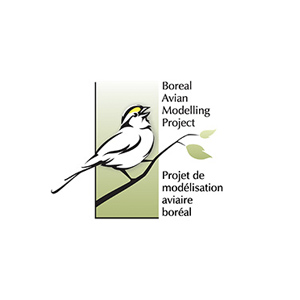
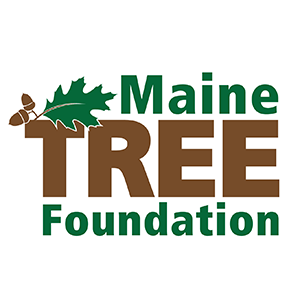

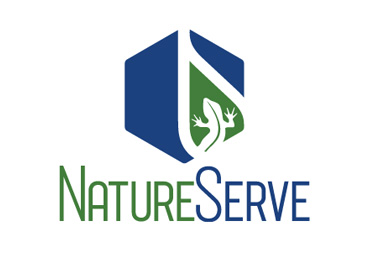


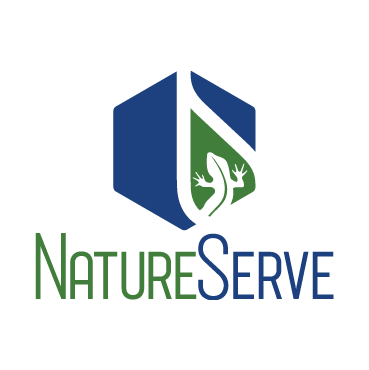
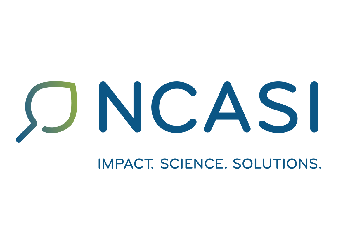
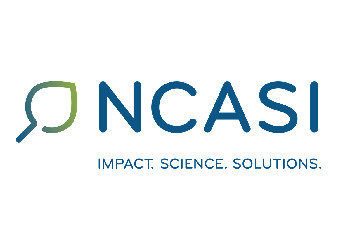

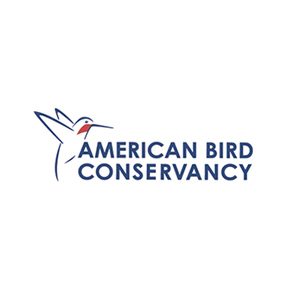

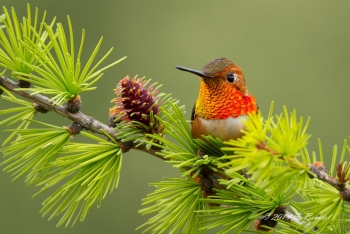



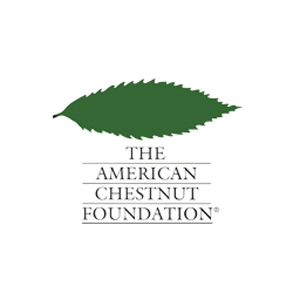
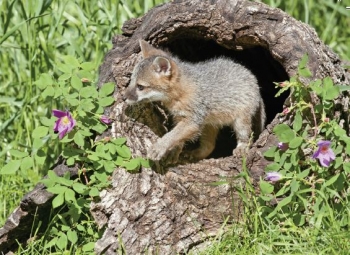



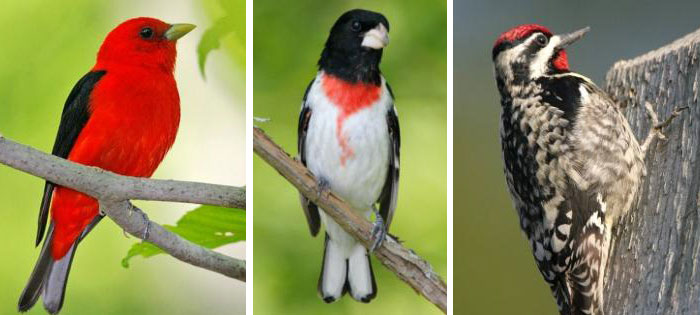


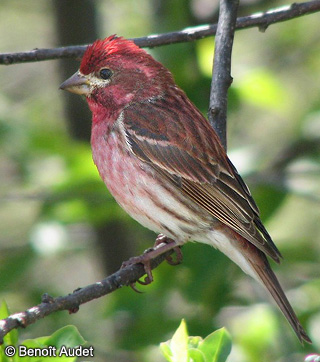




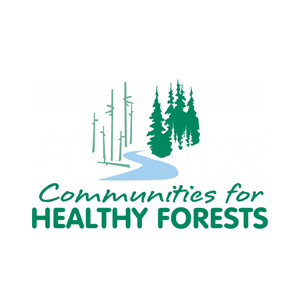





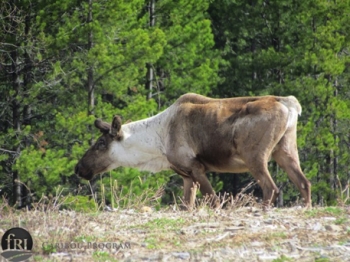







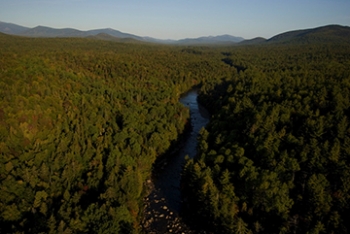






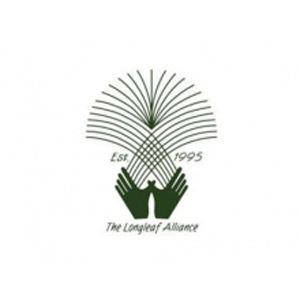
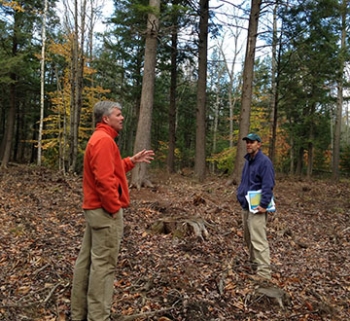

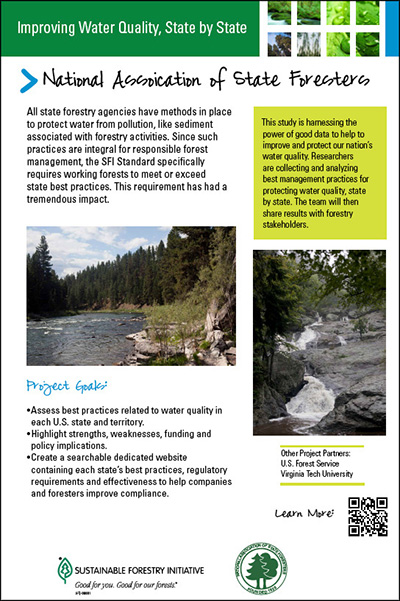


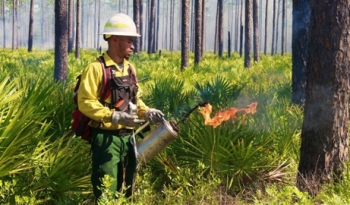




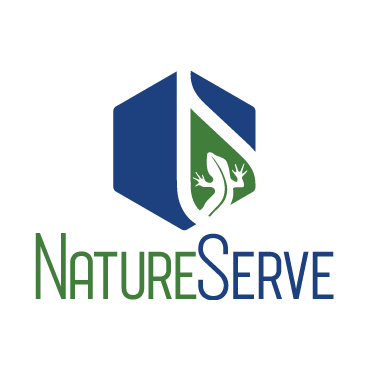
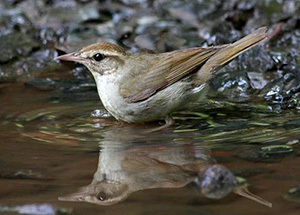 In 2013,
In 2013, 

